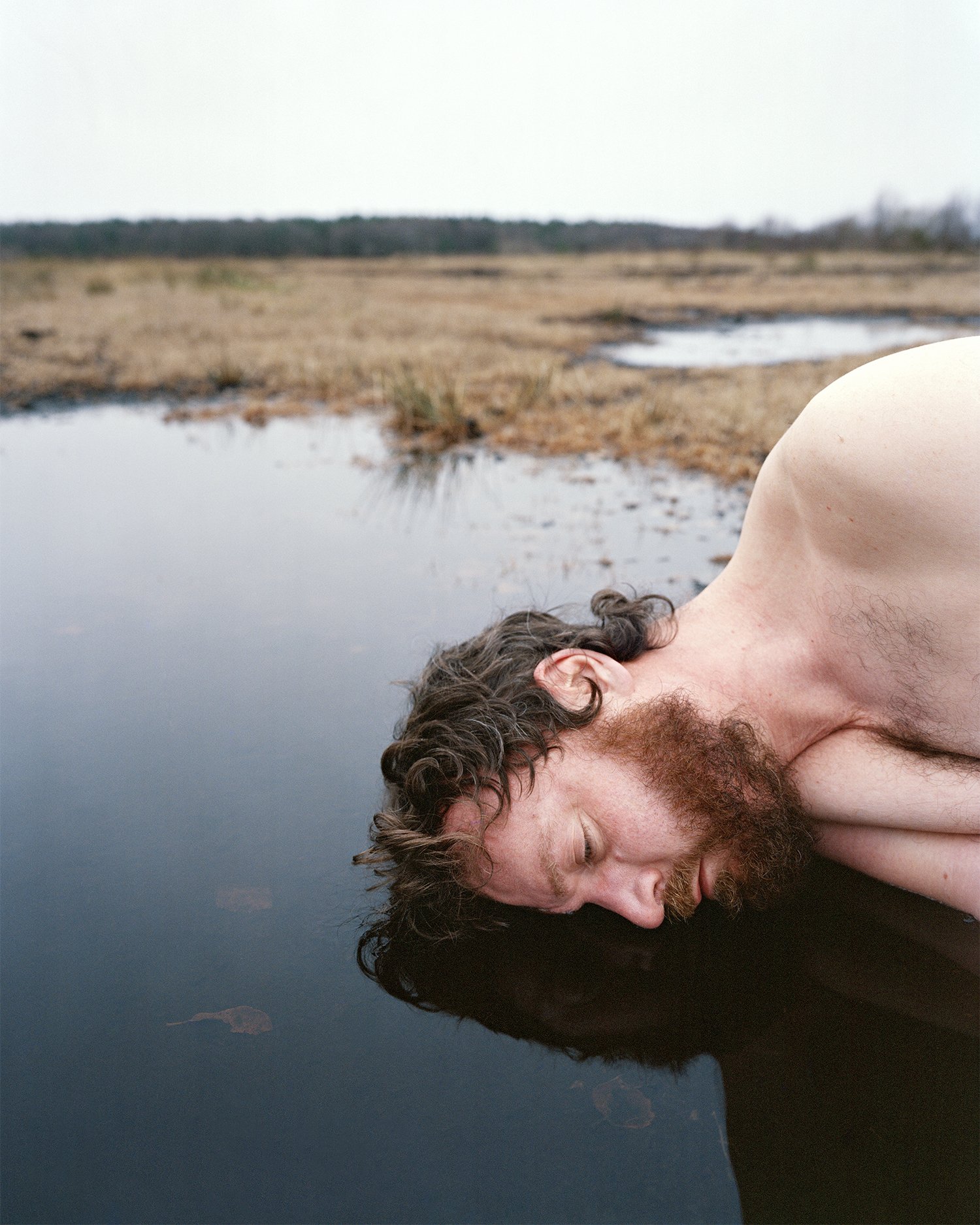
Bog self portrait, Carbury, County Kildare, Ireland, 2019.
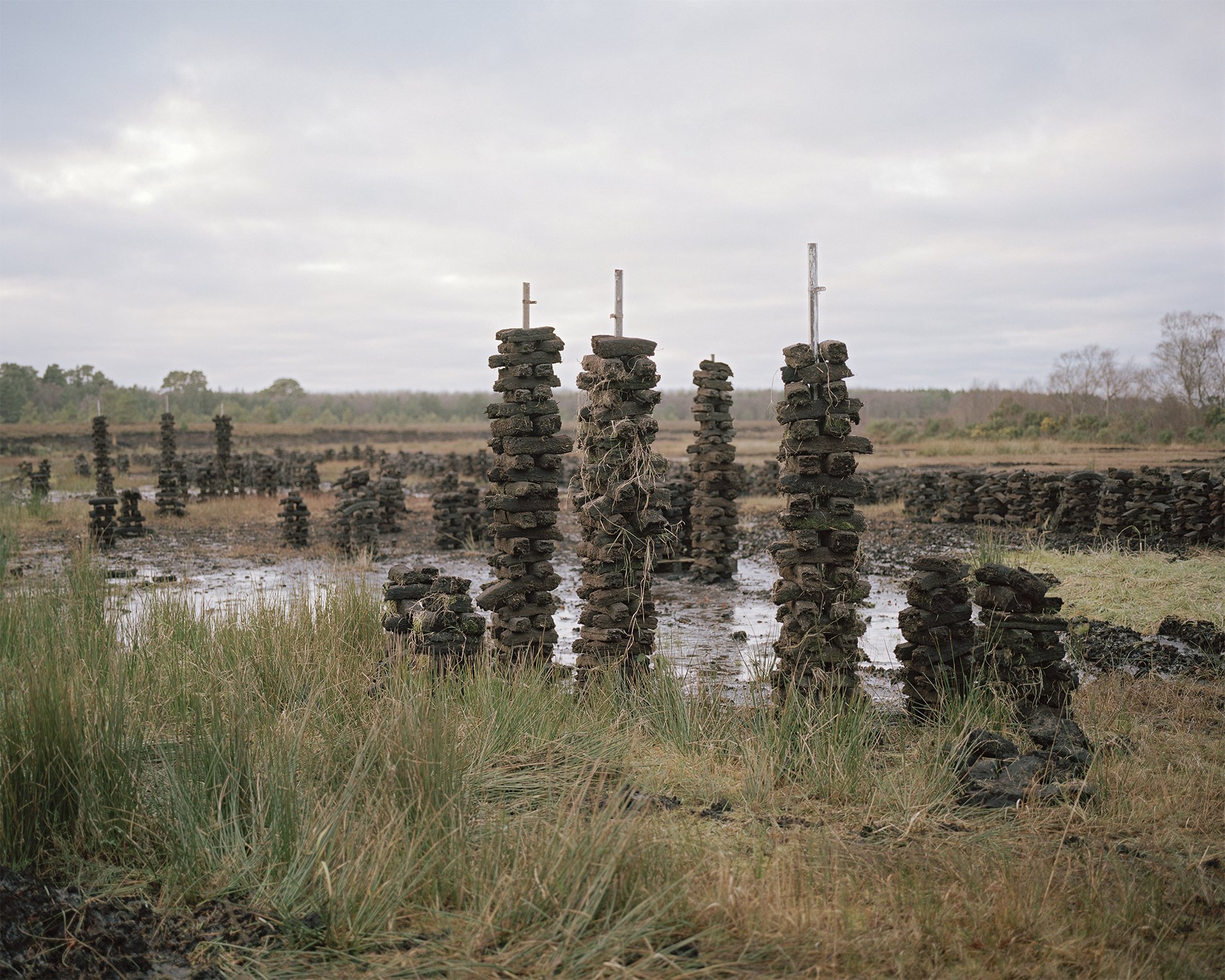
Tony’s Footings, on a bog used to harvest turf for domestic use, Carbury, County Kildare, Ireland, 2018.
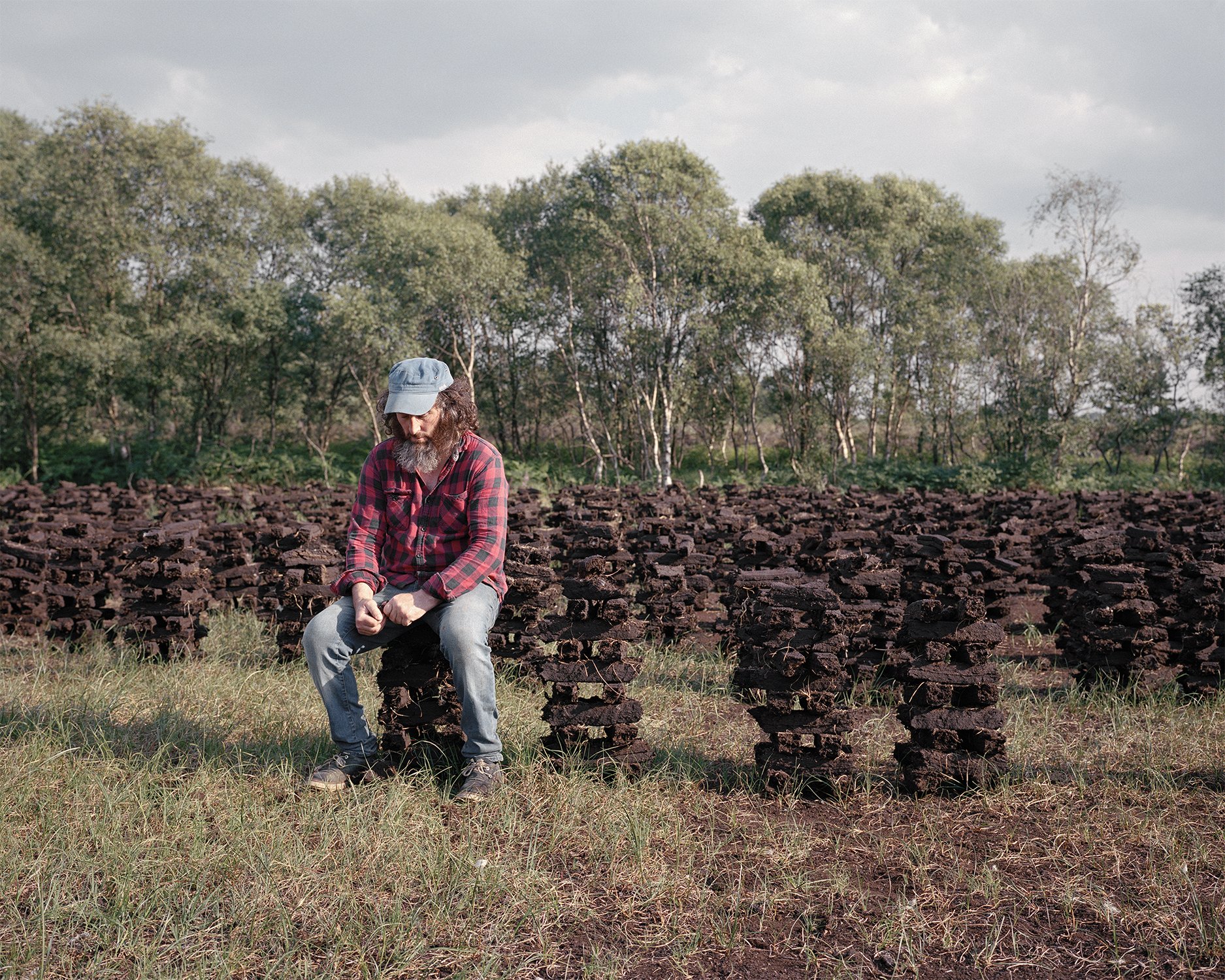
Tony with his turf, on a bog used to harvest turf for domestic use, Carbury, County Kildare, Ireland, 2018.
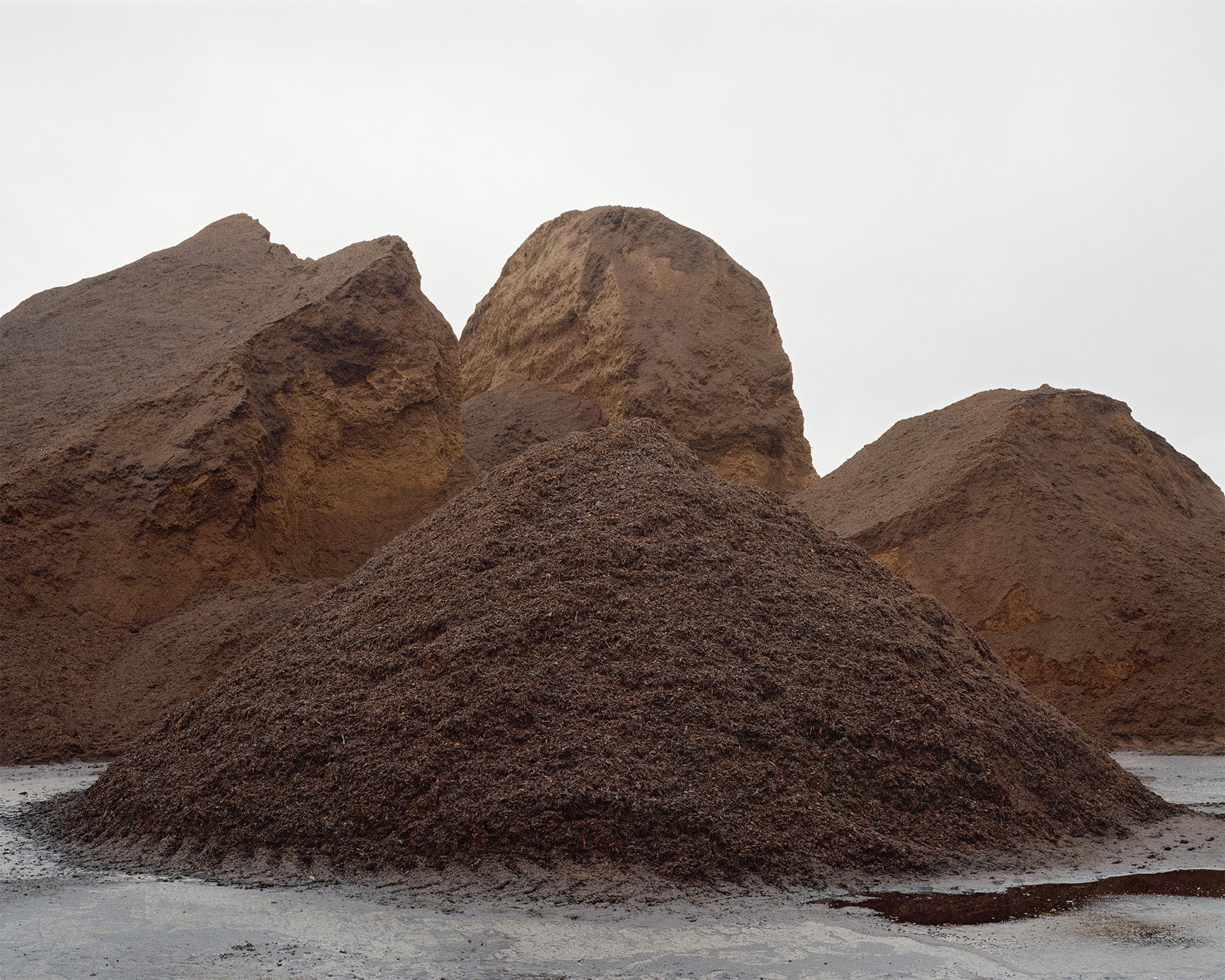
Harvested peat stockpiles at a horticulture production facility, Carbury, County Kildare, Ireland, 2020.
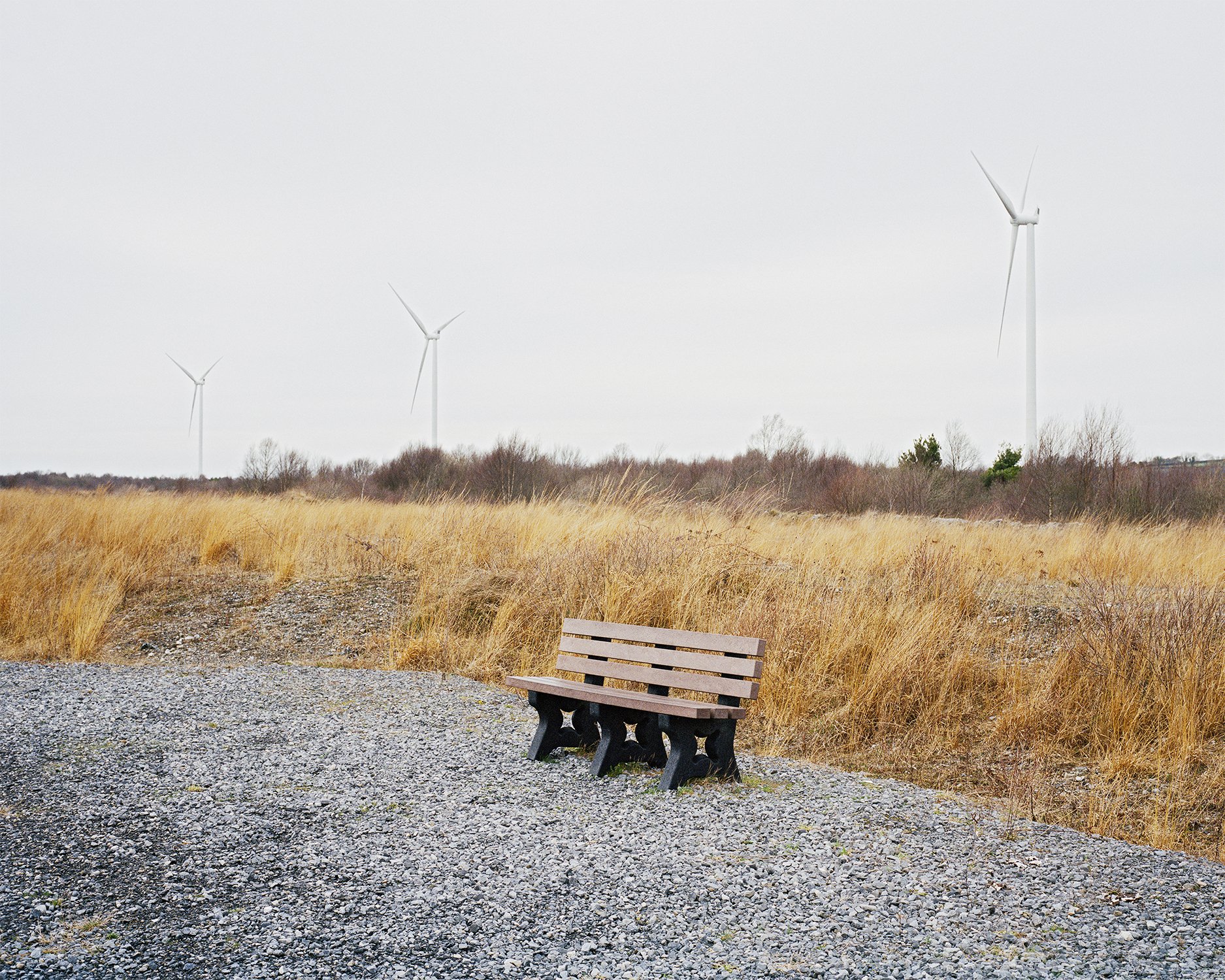
Mount Lucas Wind Farm commissioned in 2014, County Offaly, Ireland, 2020.
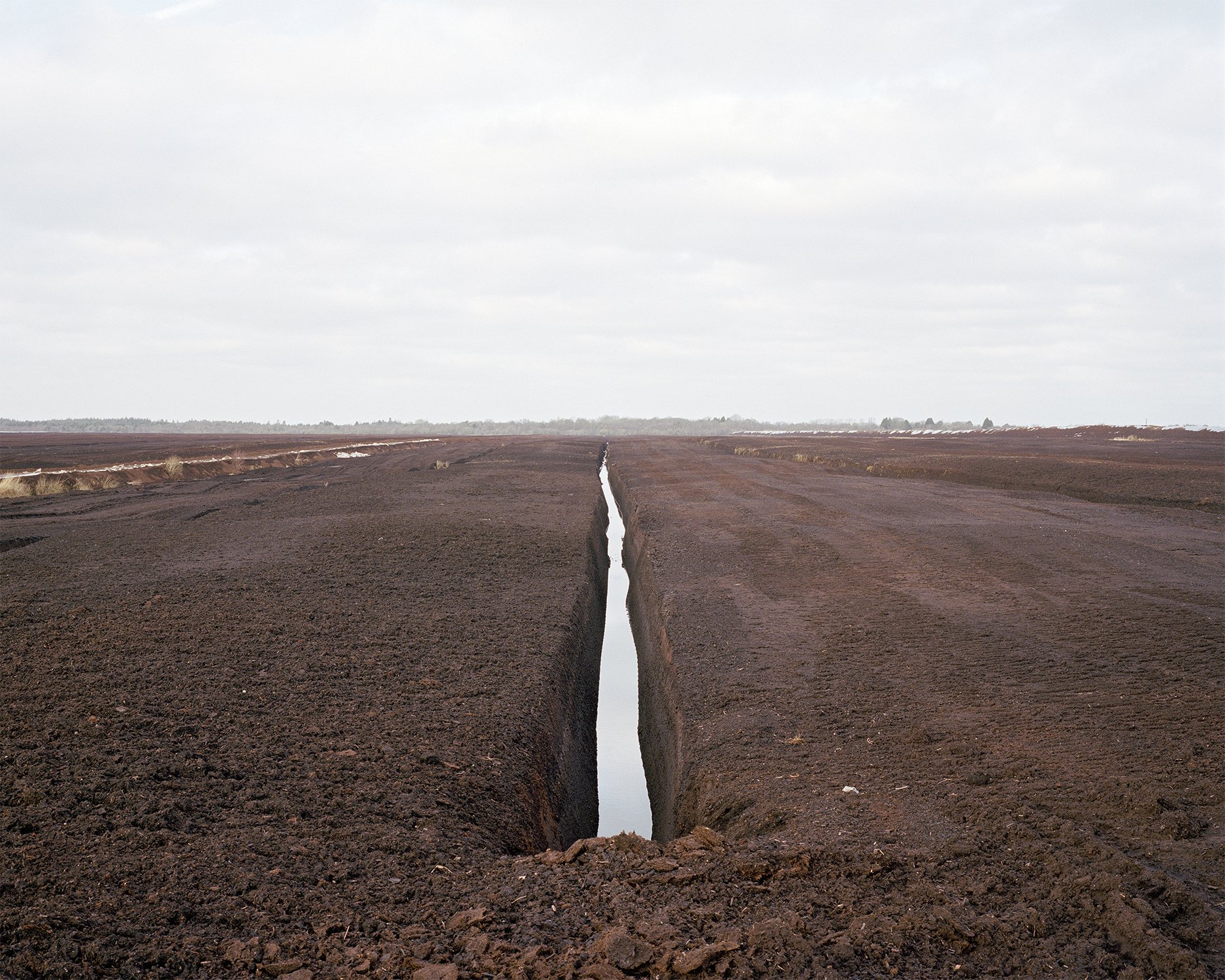
Drain on Ballydermot bog previously used to harvest peat for power generation, 2020.
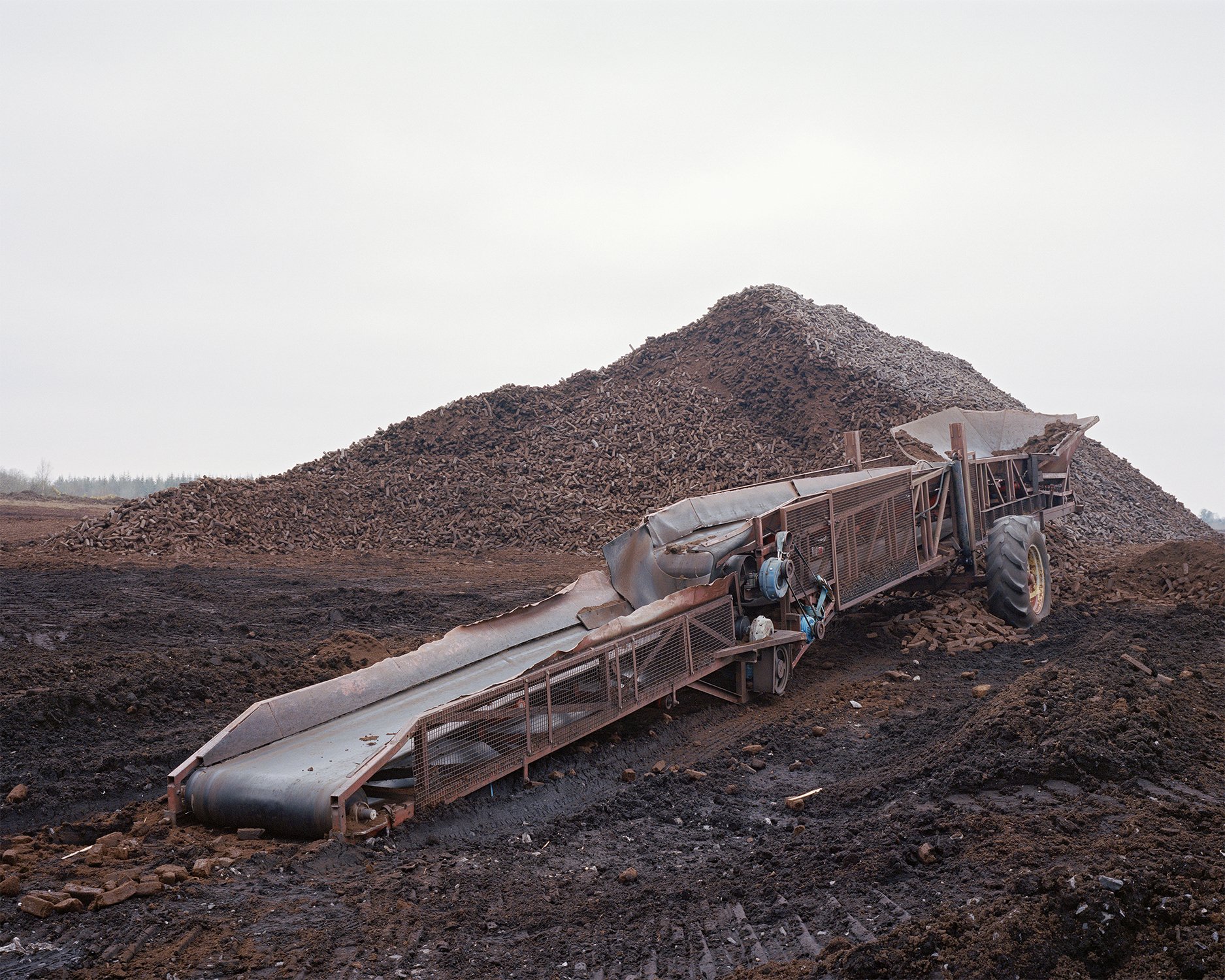
Mechanical hopper for loading turf into trucks, County Offaly, Ireland, 2020.
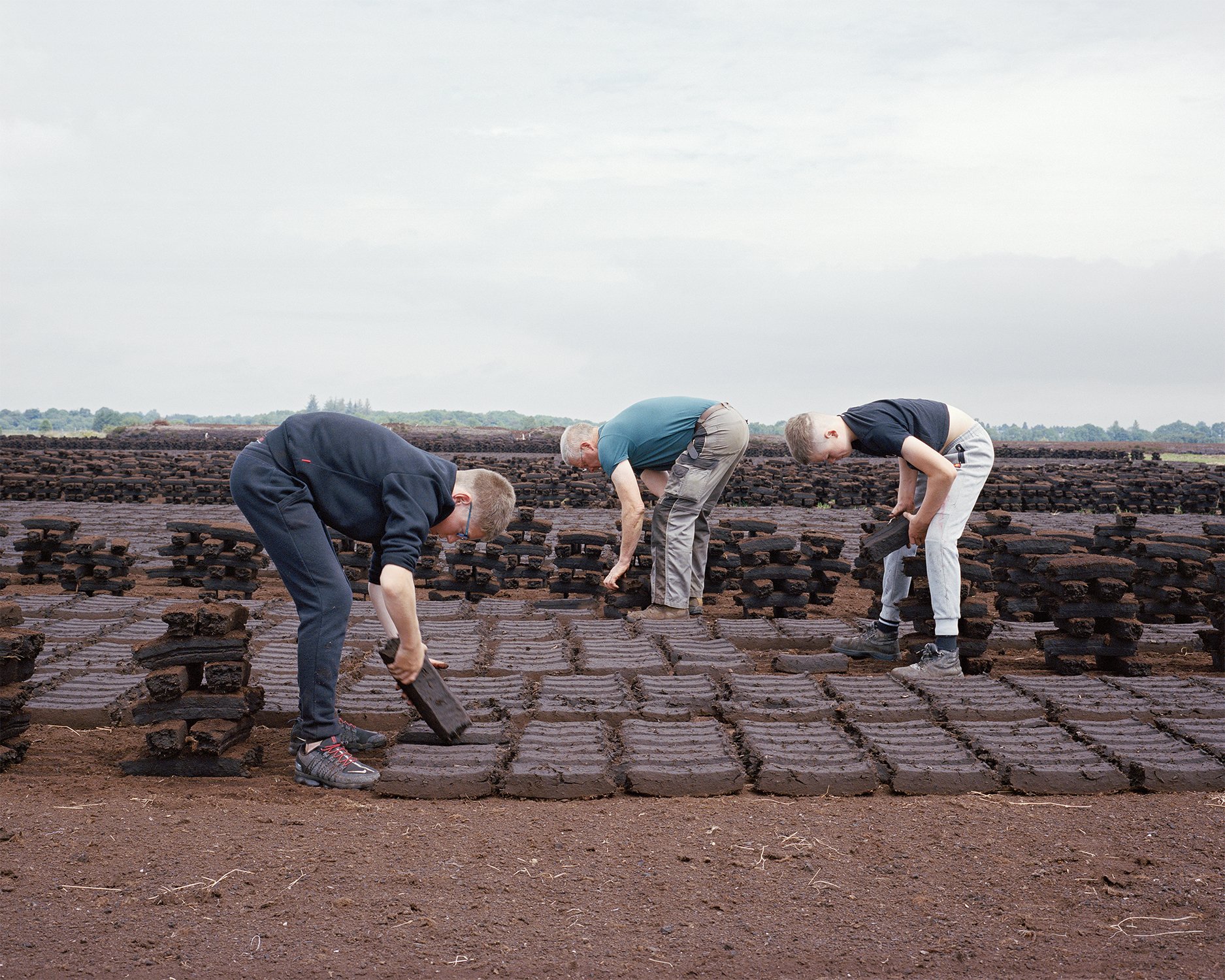
Family footing turf for domestic use, Ticknevin, County Kildare, Ireland, 2020.

Shower Block at Kilinthomas Turf Camp, built during World War 2, County Kildare, 2020.
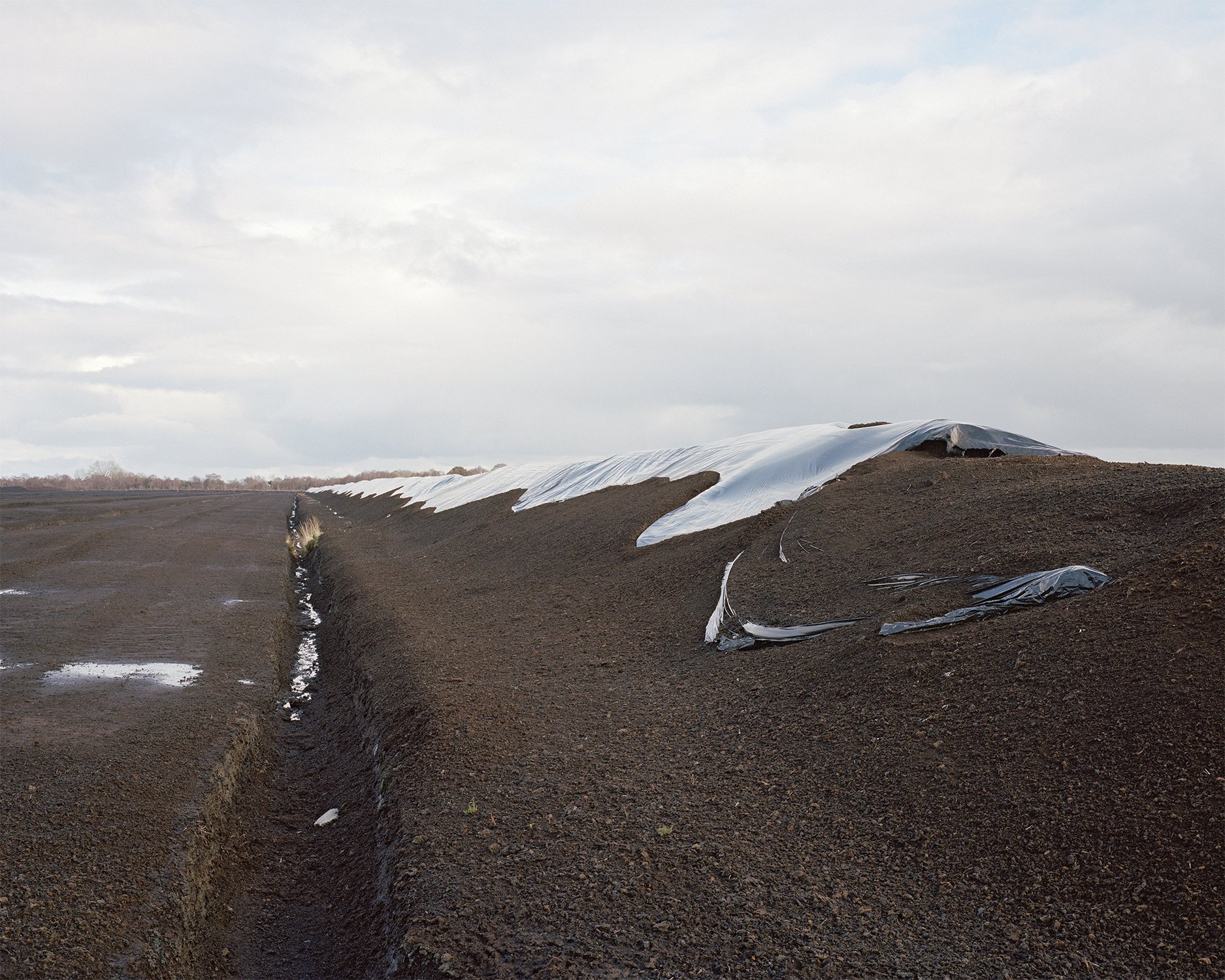
One of the last stockpile ridges of harvested peat on Ballydermot Bog, County Offaly, Ireland, 2021.
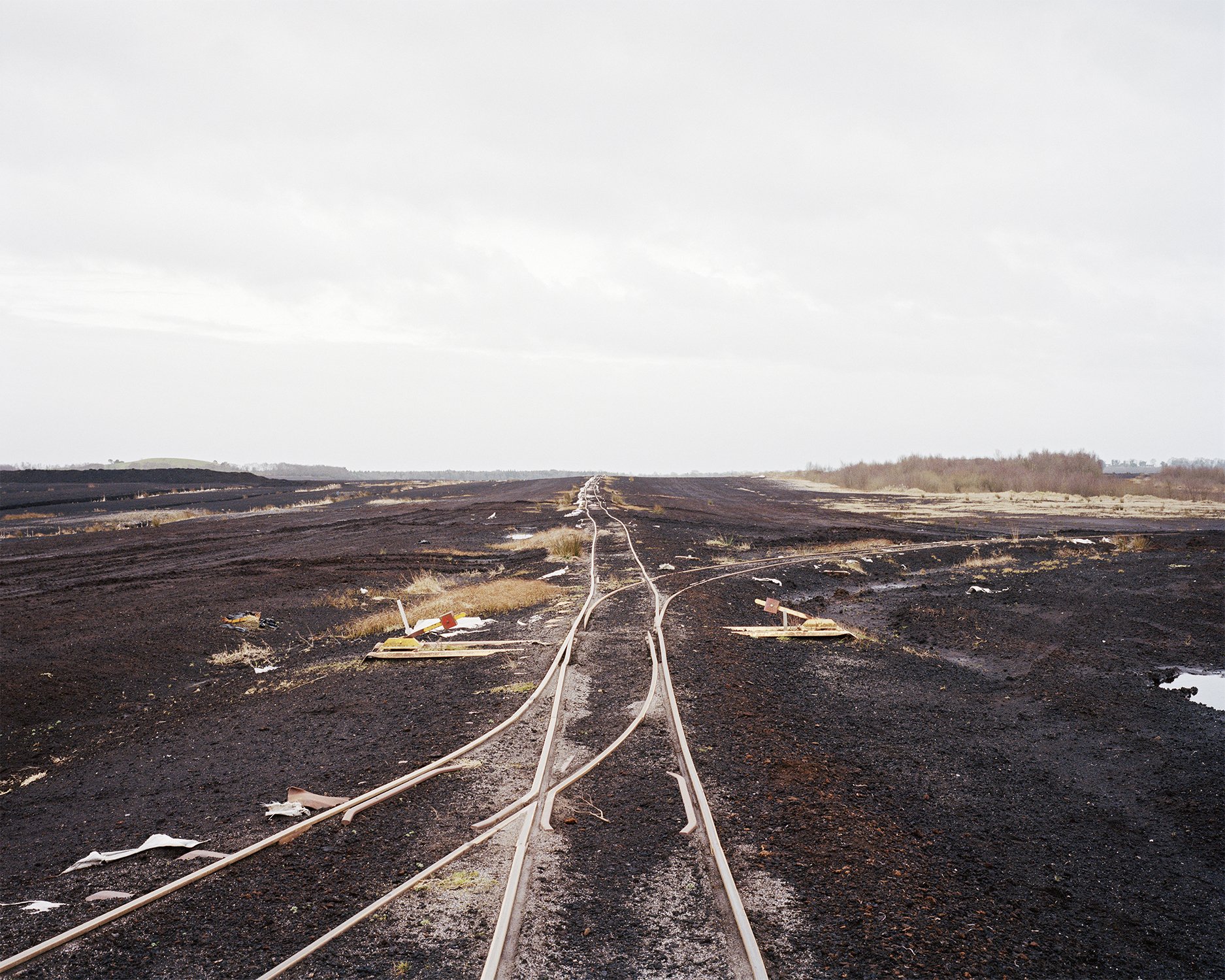
ndustrial narrow-gauge railway on Gilltown Bog, County Kildare, Ireland, 2022.
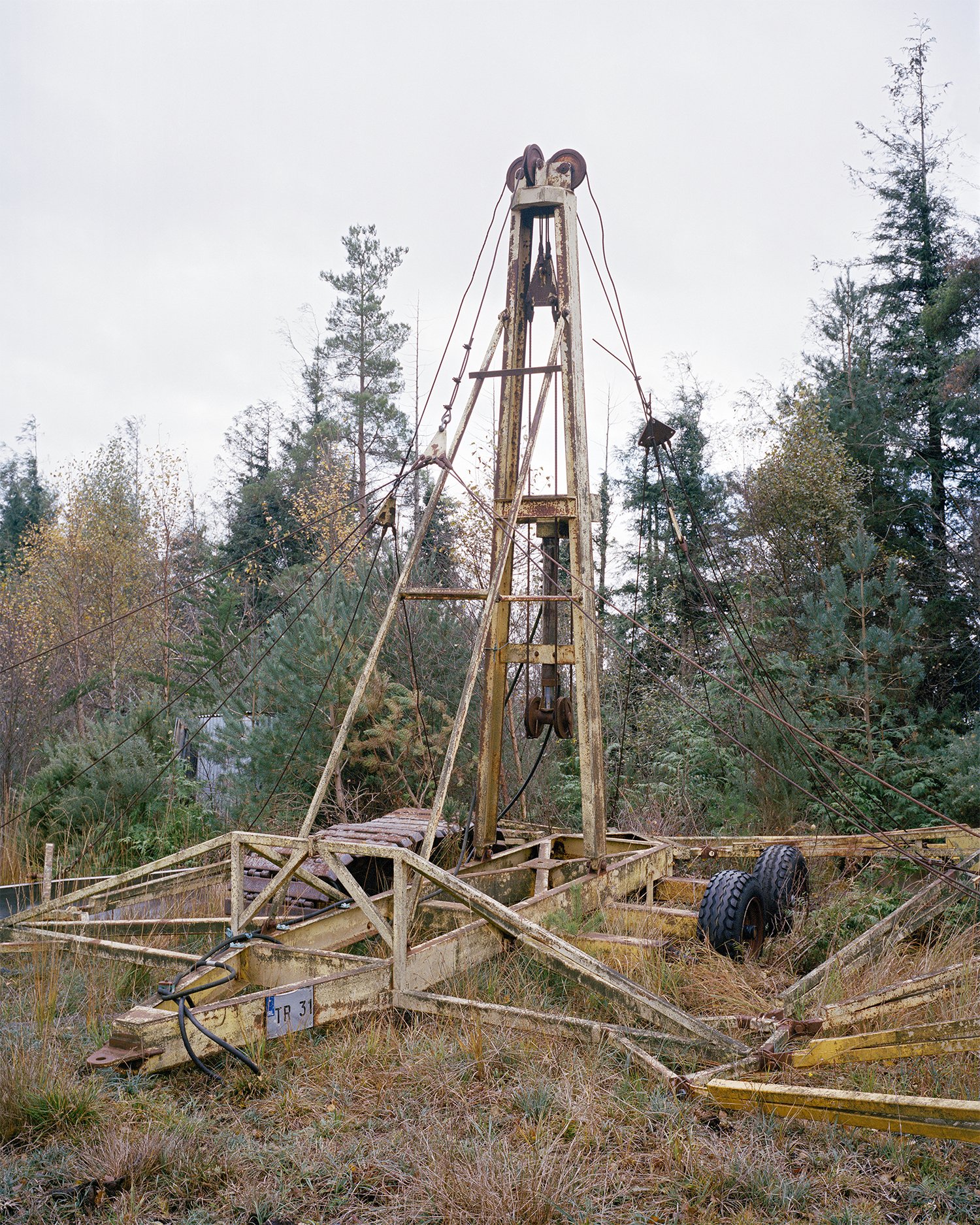
Abandoned milled peat ridger machine, County Offaly, Ireland, 2022.
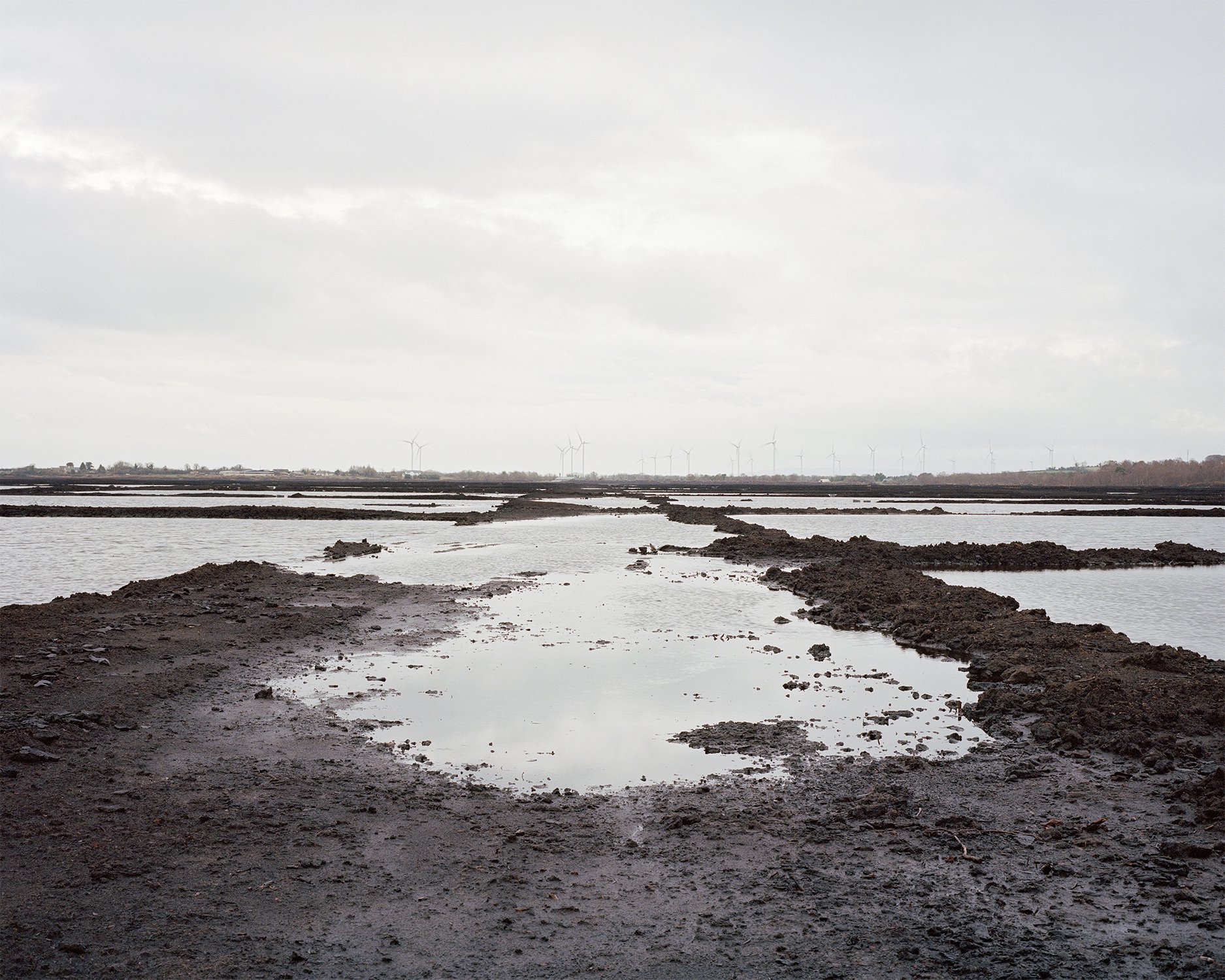
Recently rehabilitated Esker Bog with Mount Lucas windfarm in the distance, County Offaly, Ireland, 2023.
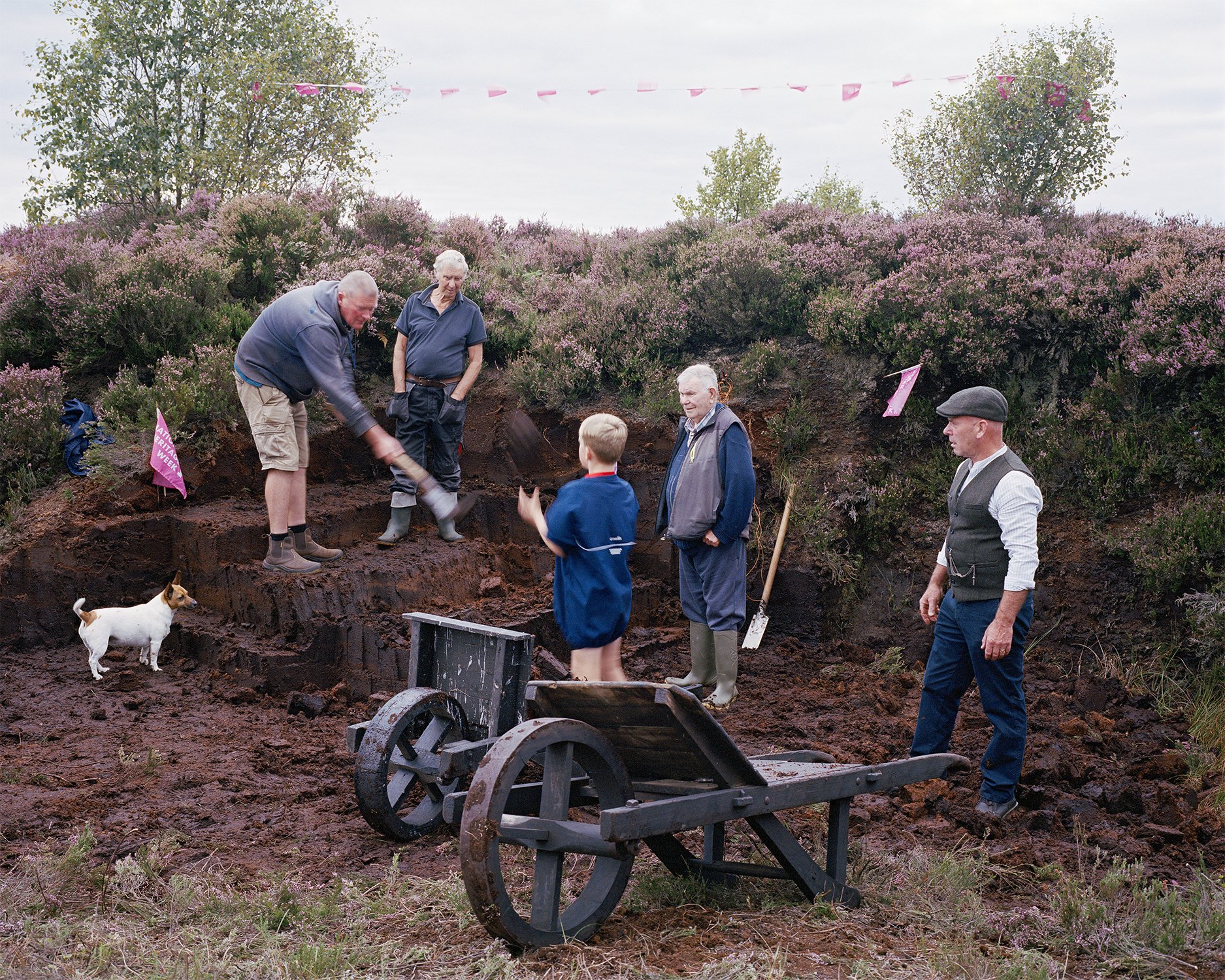
Re-enactment of traditional hand won turf techniques, Ballyteague, County Kildare, Ireland, 2023.

Base supports for Solar panel support frames, Timahoe, County Kildare, Ireland, 2024.

Houses at Cloontuskert workers’ village built in the 1950’s and designed by Frank Gibney for those who had come to the midlands to work for Bord na Móna, Co. Roscommon, Ireland, 2024.
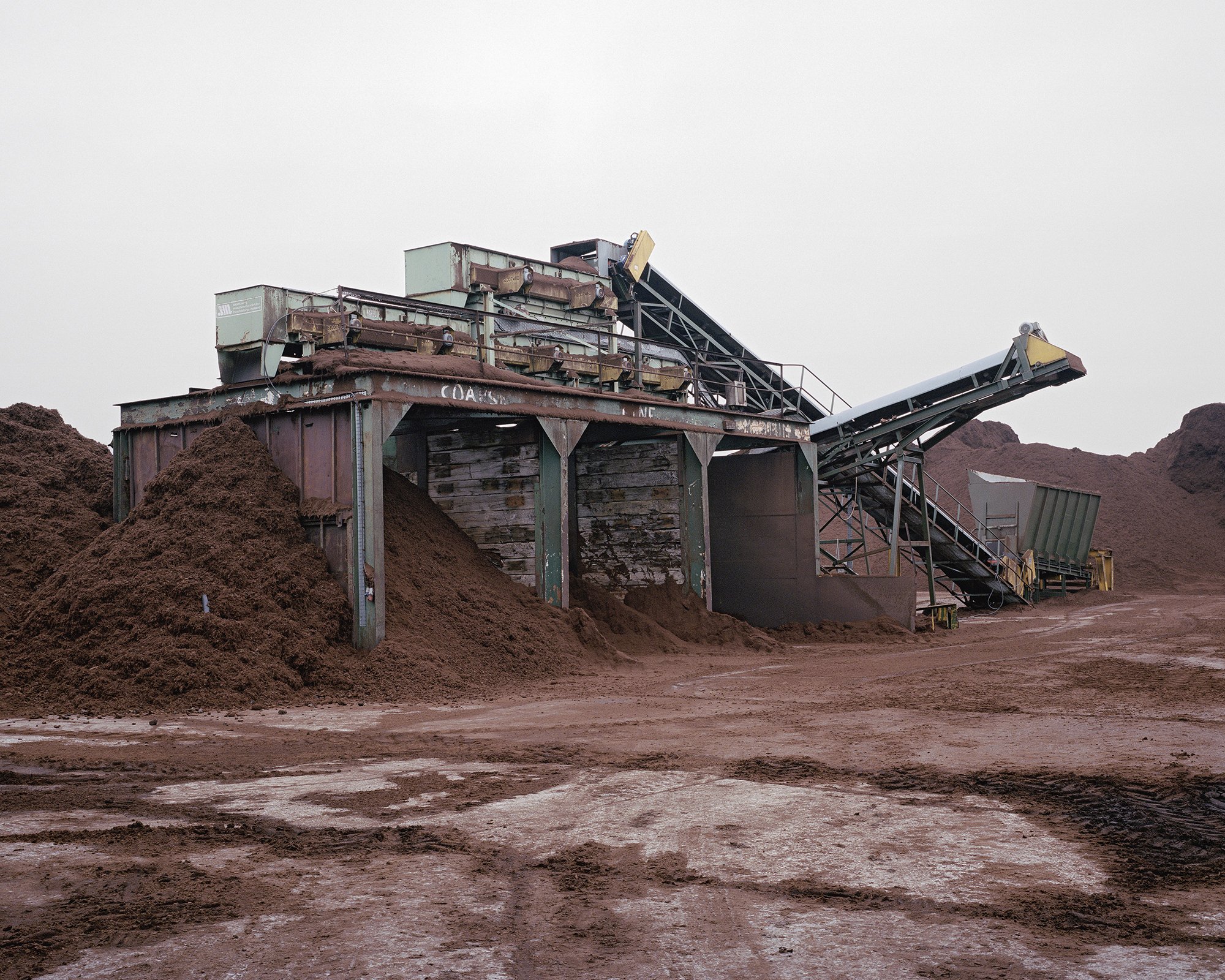
Peat separator used to sort peat for horticultural use, Co. Kildare, Ireland, 2019.
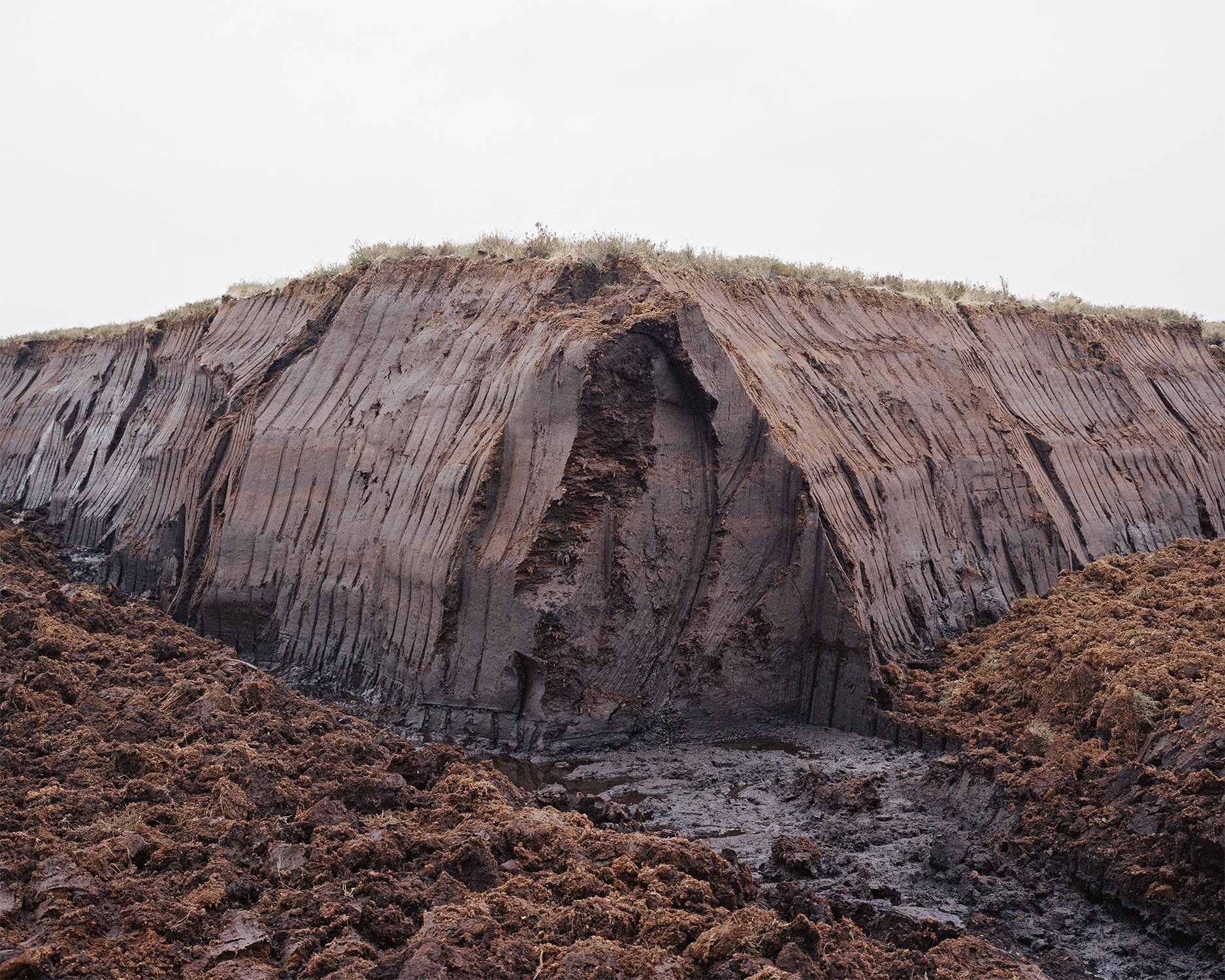
Facebank where peat has recently been extracted for turf production, Allenwood, Co. Kildare, Ireland, 2020.
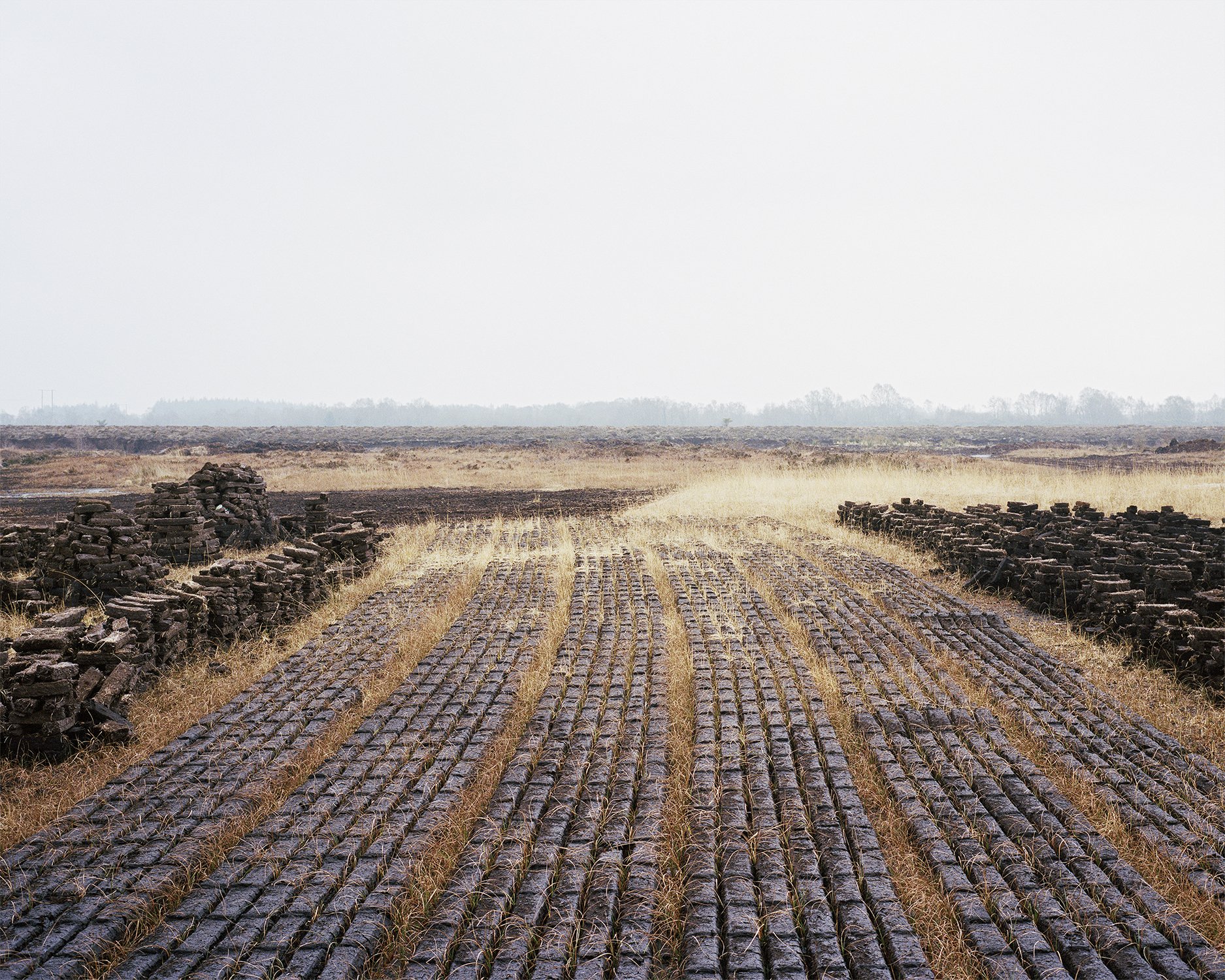
Rows of unfooted turf from previous harvest at a privately owned bog, Drehid, Co. Kildare, Ireland, 2021.

Local gang hand cutting turf. Shot in Summer on a community owned bog, Carbury, County Kildare, Ireland, circa 1910’s. (Courtesy of Martin Keenan).
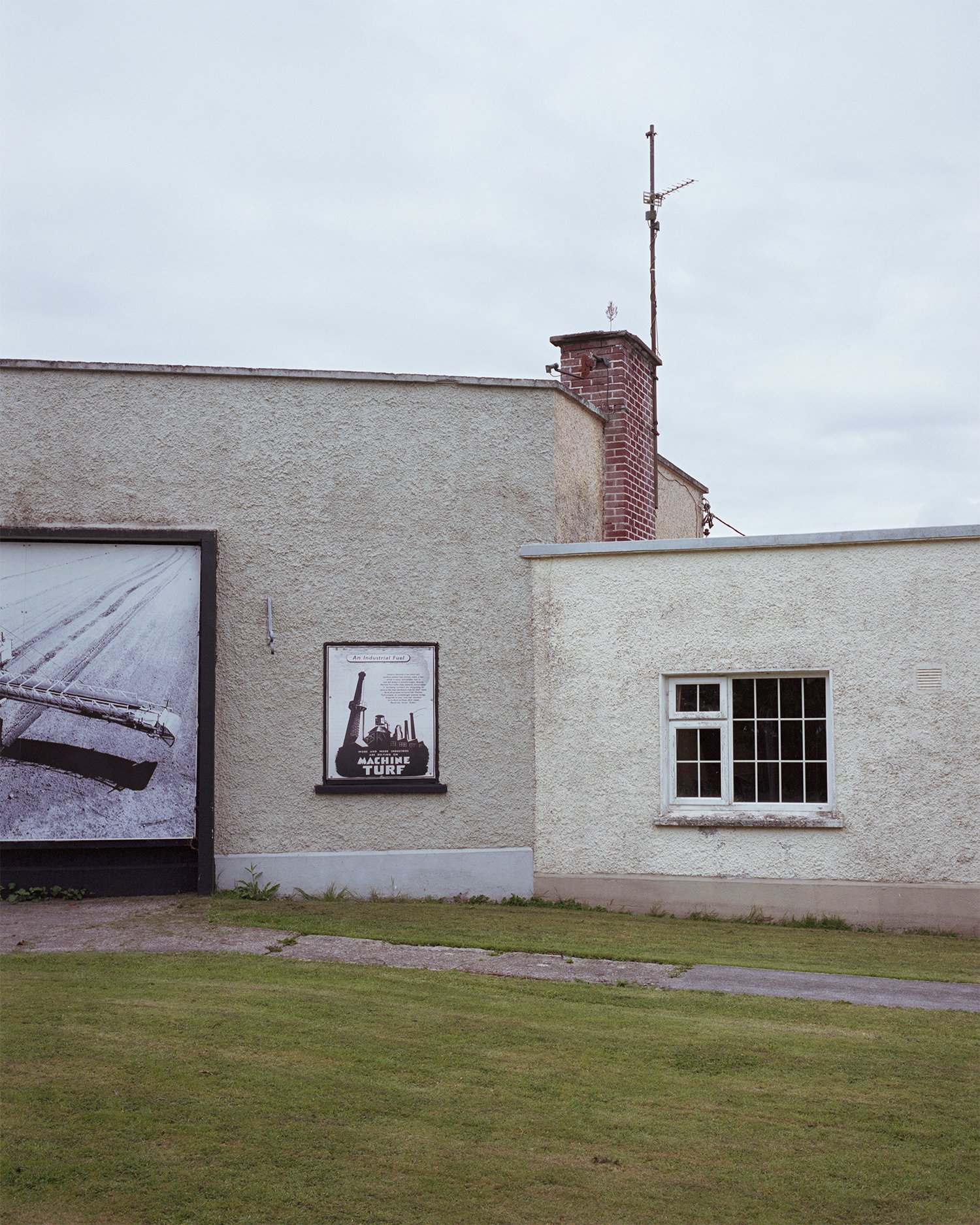
Disused community buildings at Cloontuskert workers’ village built in the 1950’s and designed by Frank Gibney for those who had come to the midlands to work for Bord na Móna, Co. Roscommon, Ireland, 2024.
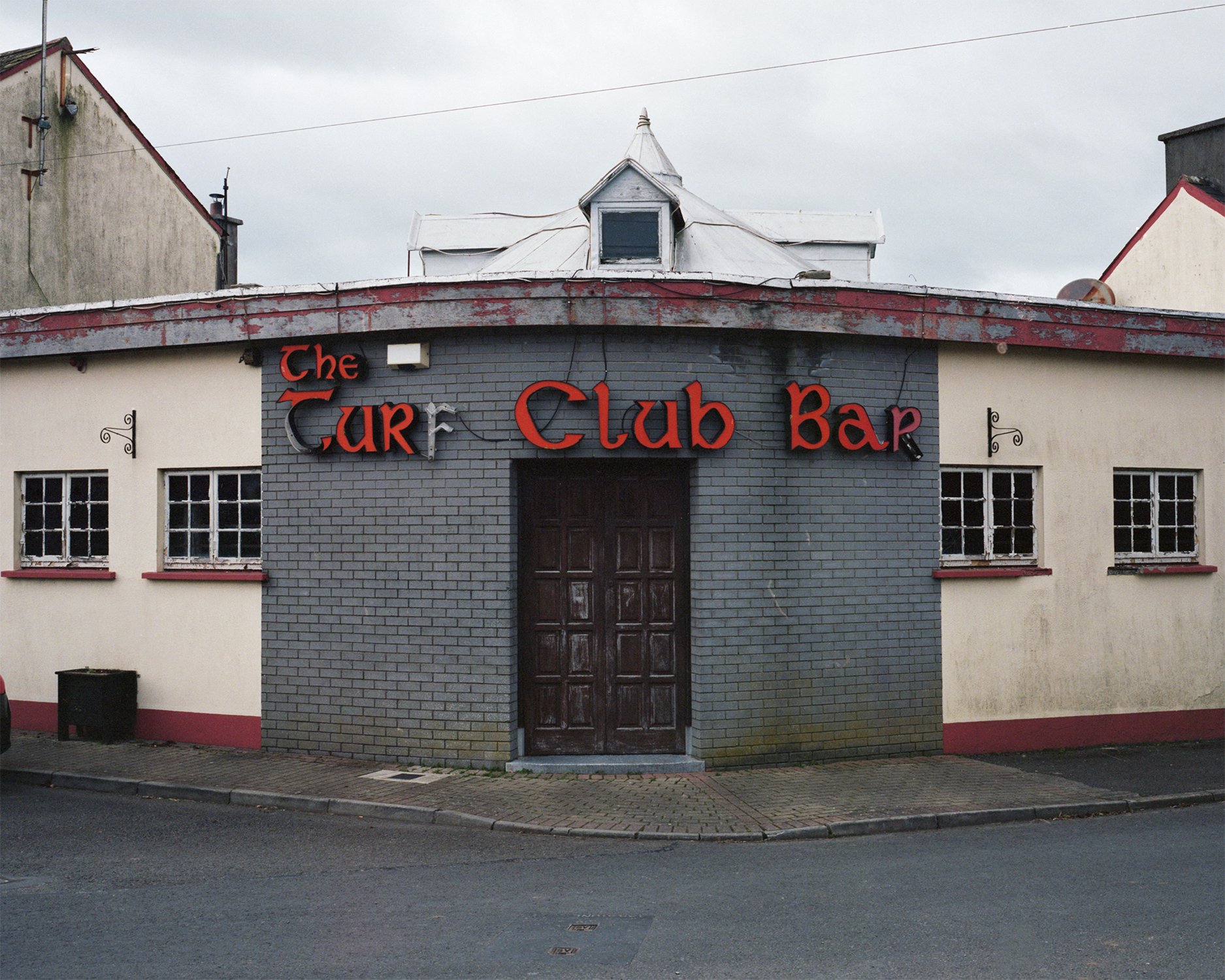
Abandoned pub, Littleton, Co. Tipperary, Ireland, 2023.
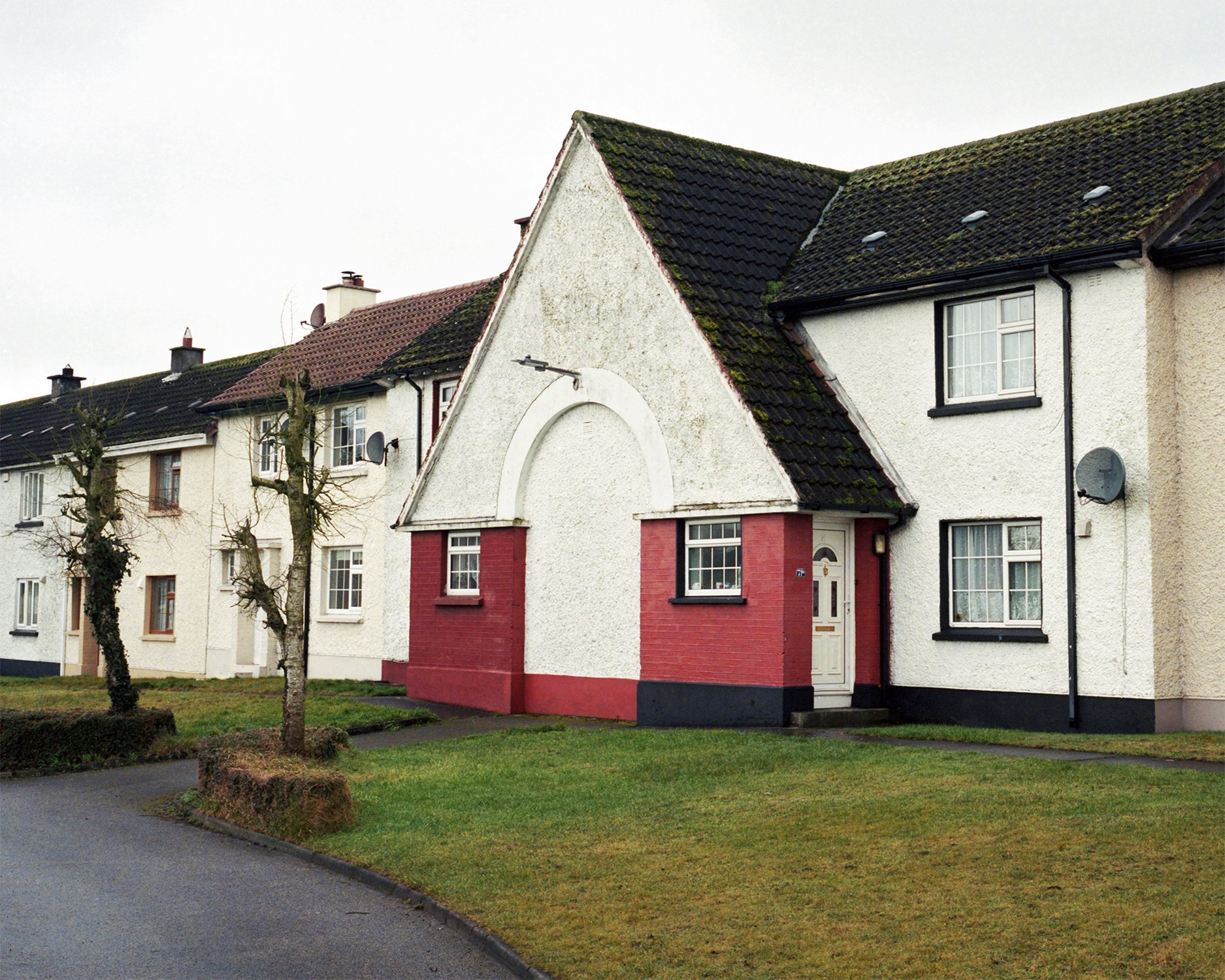
Houses at Rochfortbridge workers’ village built in the 1950’s and designed by Frank Gibney for those who had come to the midlands to work for Bord na Móna, Co. Westmeath, Ireland, 2023.

Abandoned peat harvesting machine, Co. Kildare, Ireland, 2021.
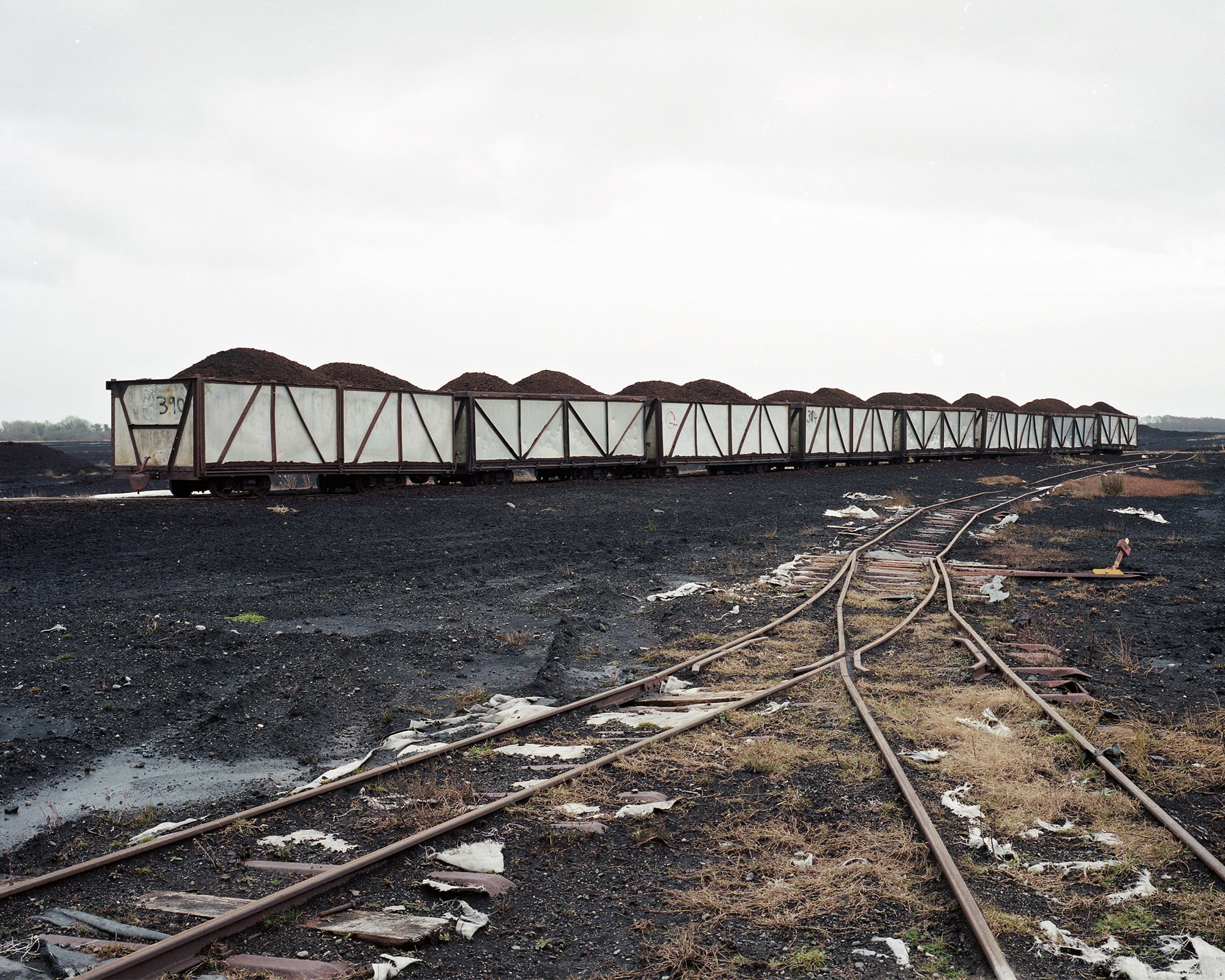
Light industrial rail system, Gillotwn, Co. Kildare, Ireland, 2022.
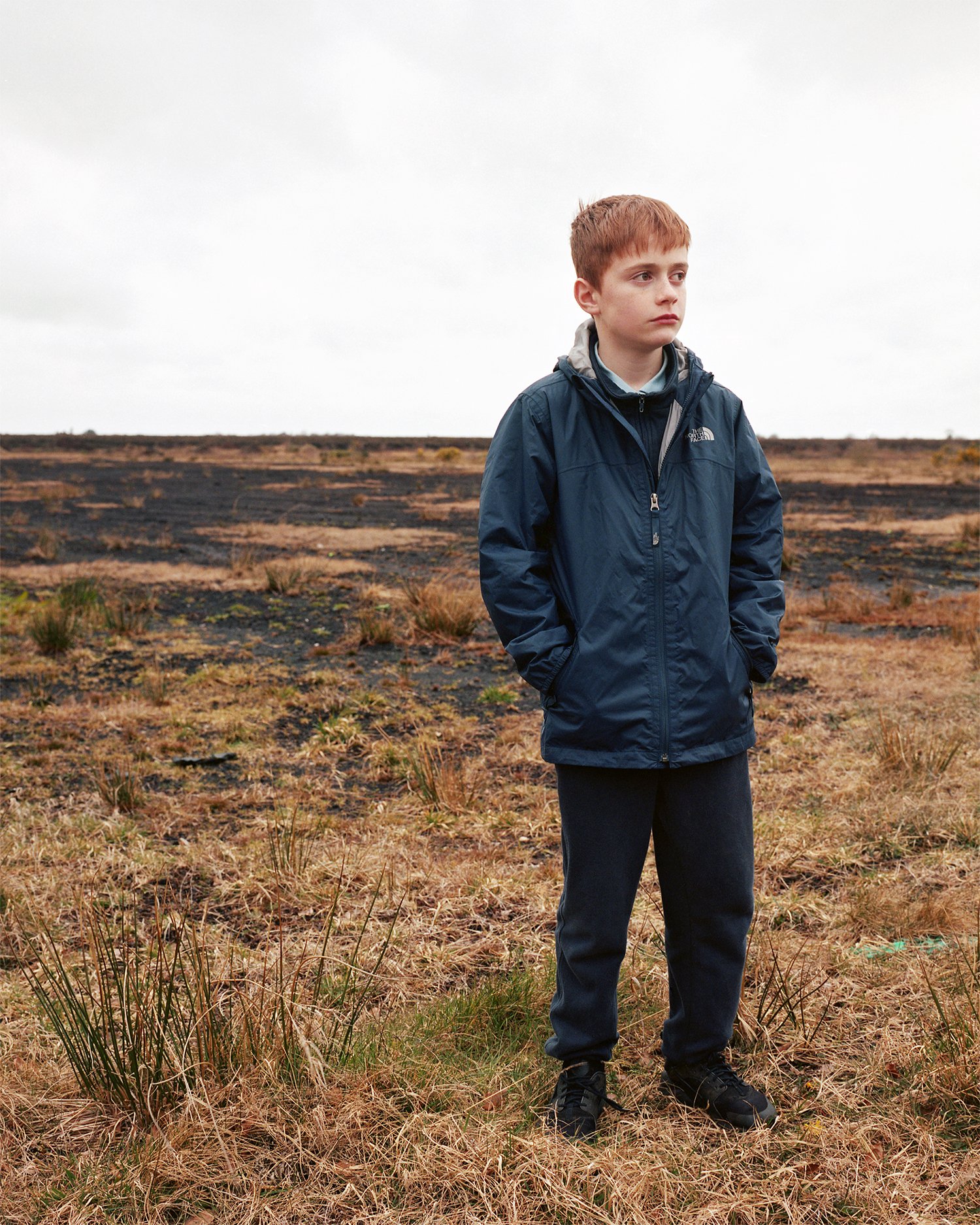
Fionn aged 10, Carbury, Co. Kildare, Ireland, 2019.

Abandoned Bord na Móna tea hut, Co. Offaly, Ireland, 2022.
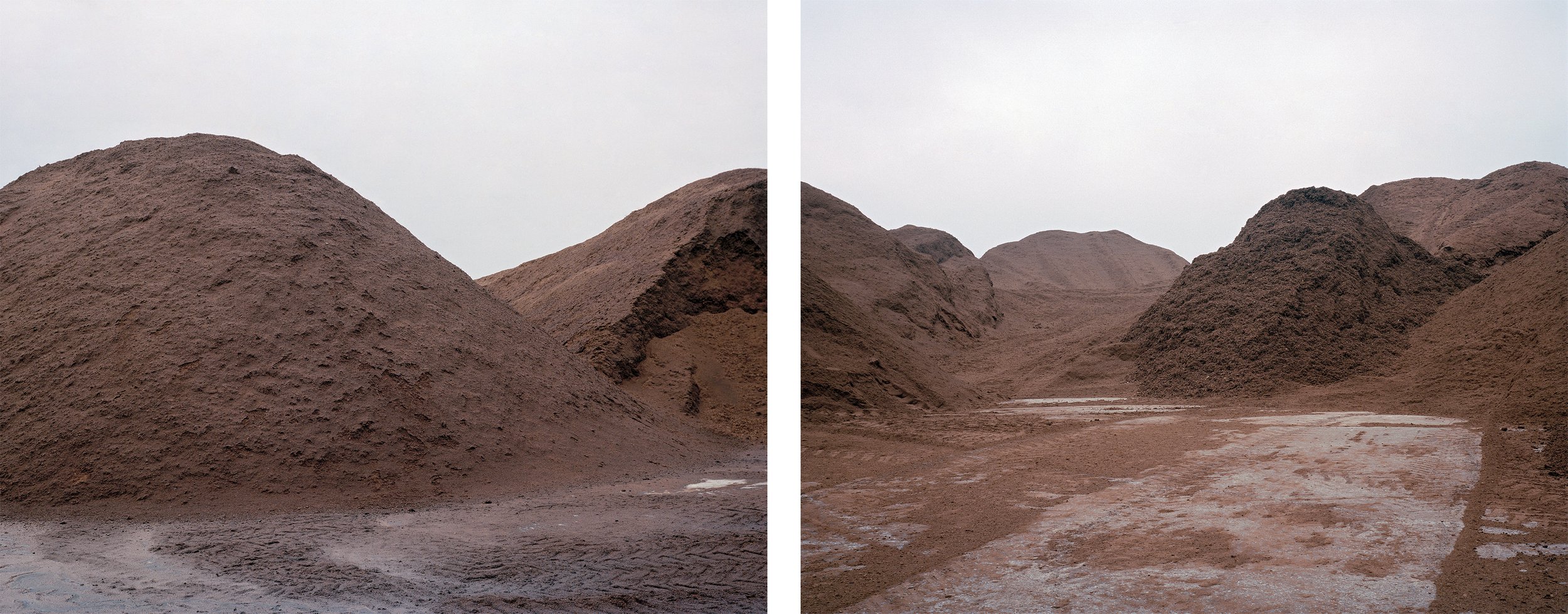
Diptych of harvested peat mounds at a privately owned horticulture production facility, Carbury, Co. Kildare, Ireland, 2019.
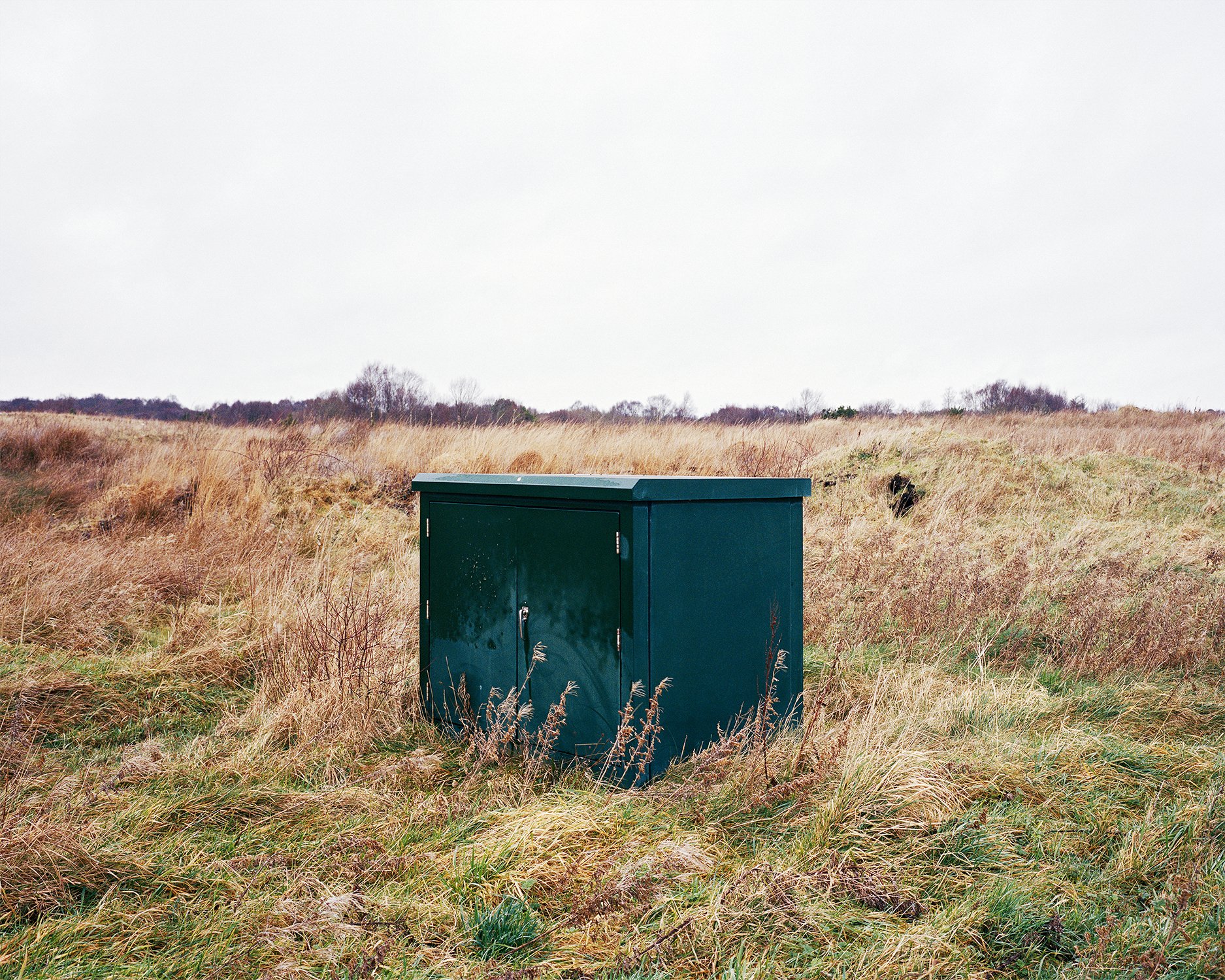
Green Utility Box near the site of a Waste Management Facilty owned and operated by Bord na Móna, Drehid, County Kildare, Ireland, 2020.
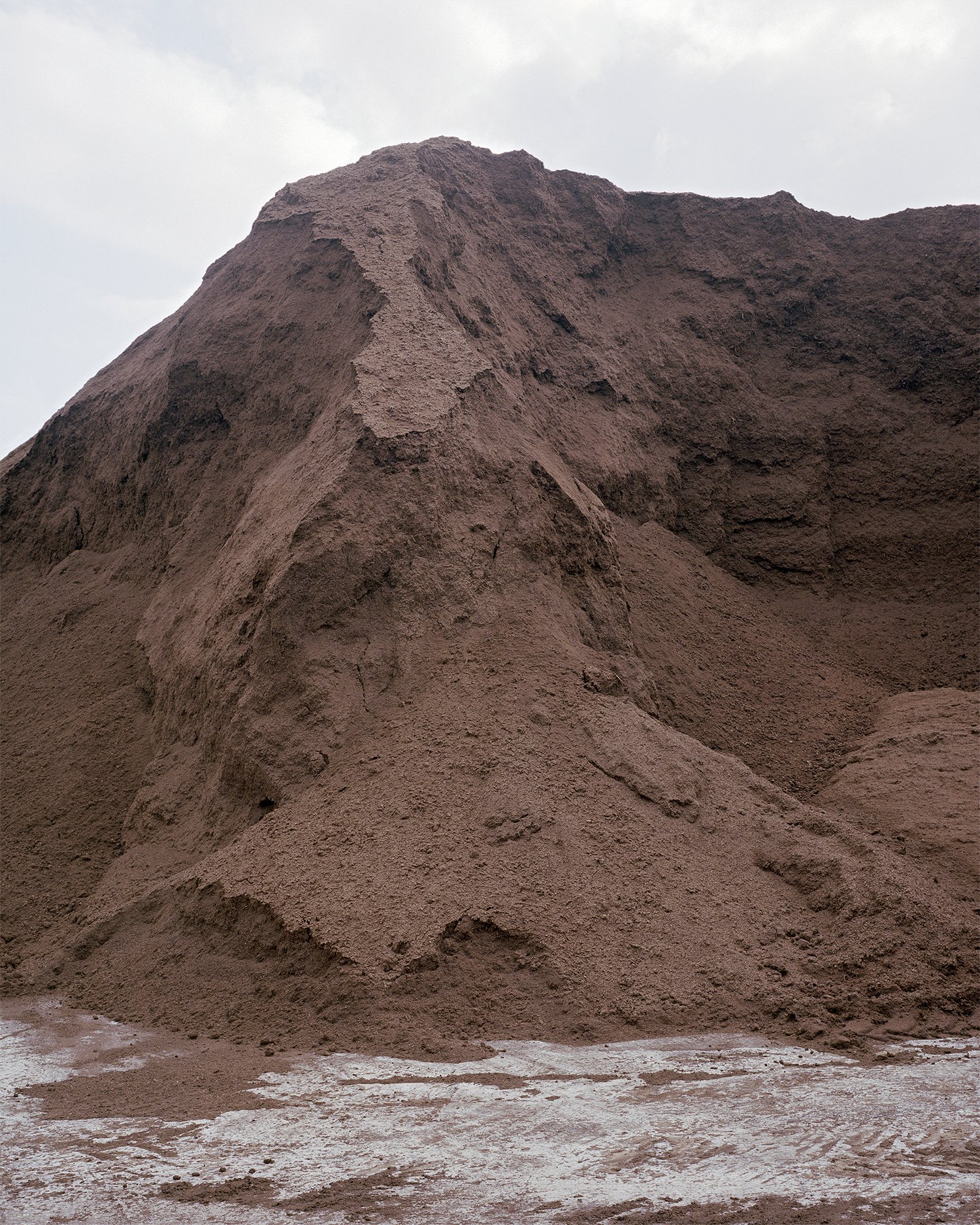
Harvested peat mound at a privately owned horticulture production facility, Co. Kildare, Ireland, 2019.
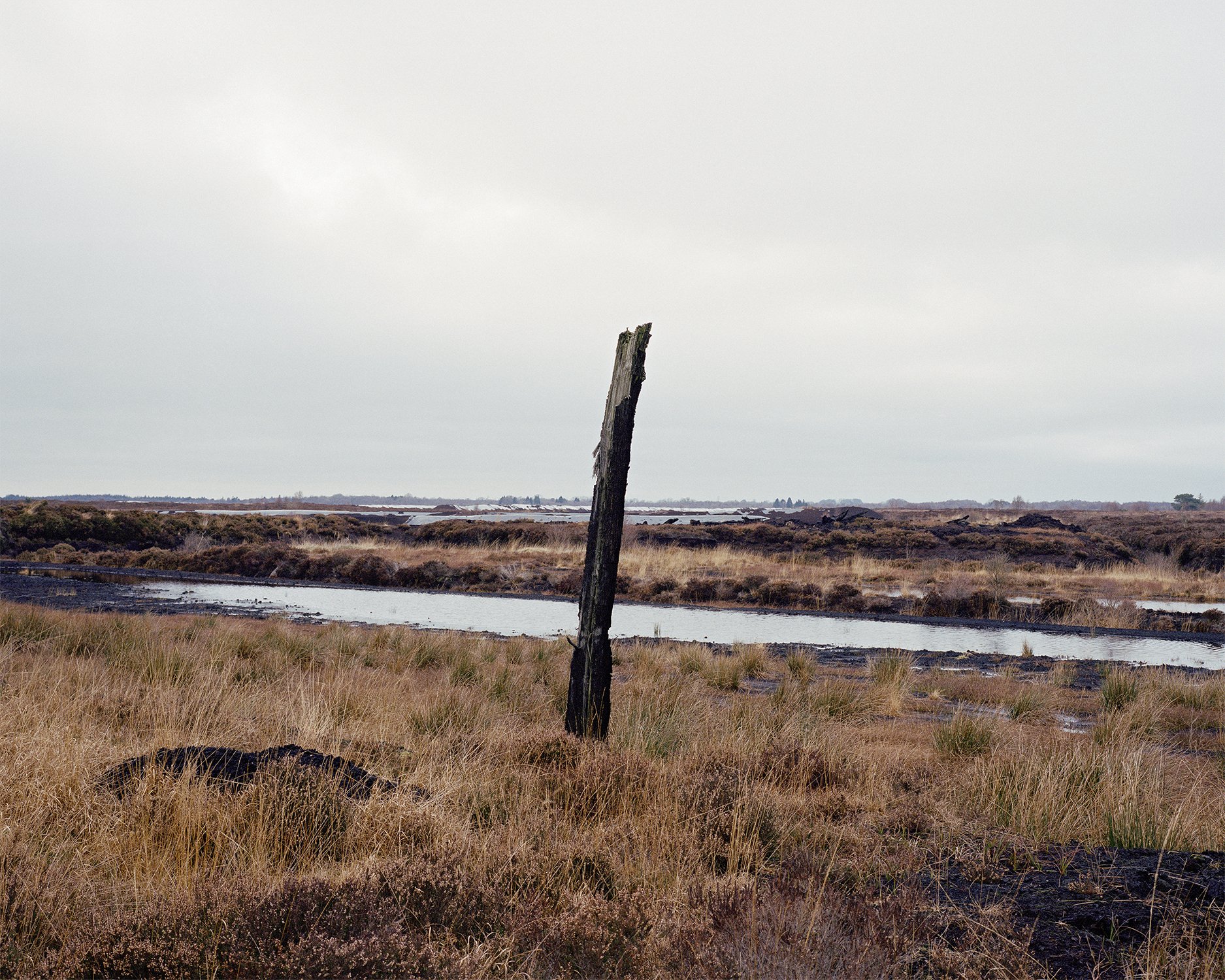
Bog Totem. Shot in Winter on privately owned bog, Ticknevin, Co. Kildare, Ireland, 2020.
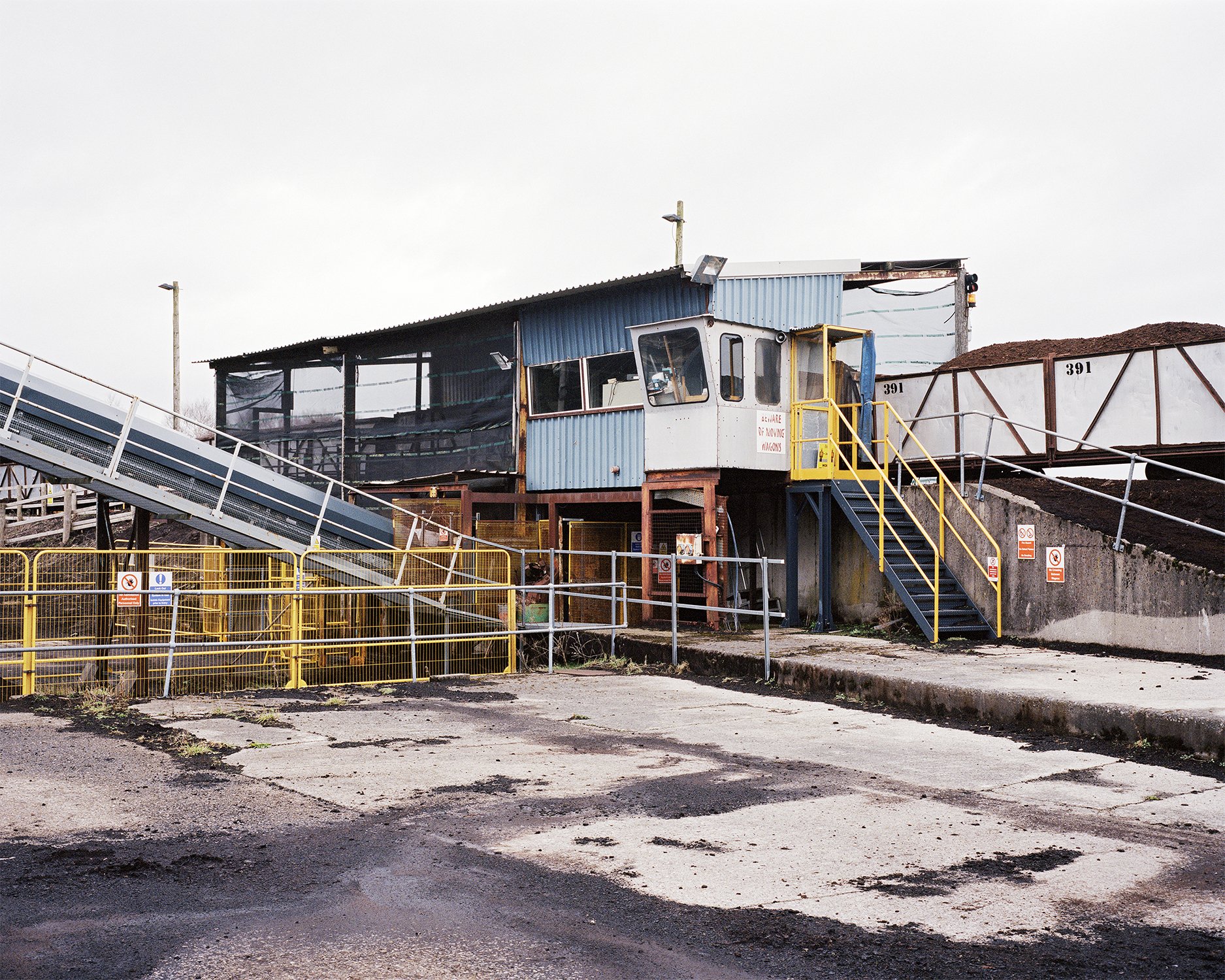
Tiphead used to load articulated lorries. Shot in early Spring at a Bord na Móna horticultural peat production facility, Gilltown, Co. Kildare, Ireland, 2022.
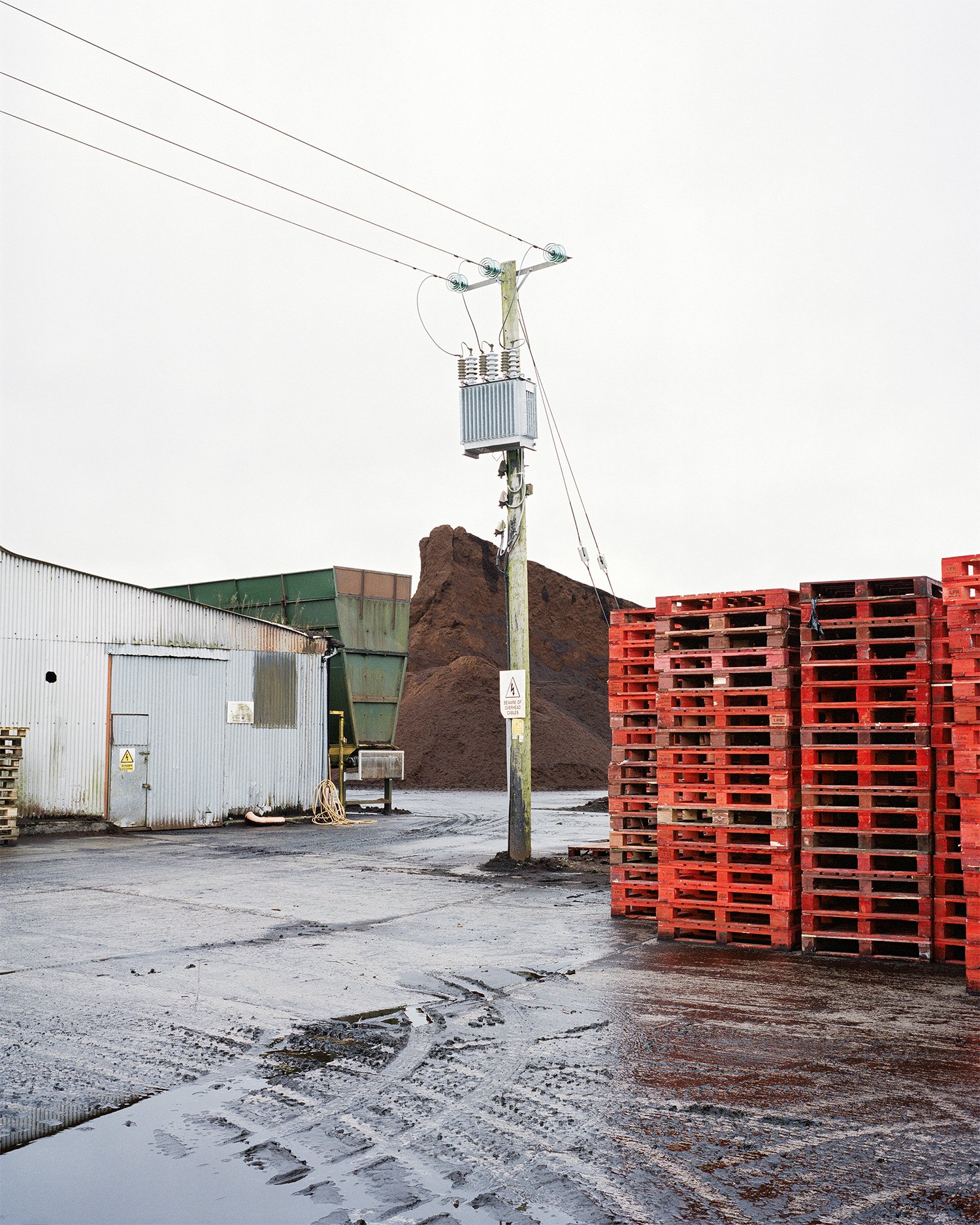
Privately owned horticultural peat production facility. Shot in Winter, Co. Kildare, Ireland, 2020.
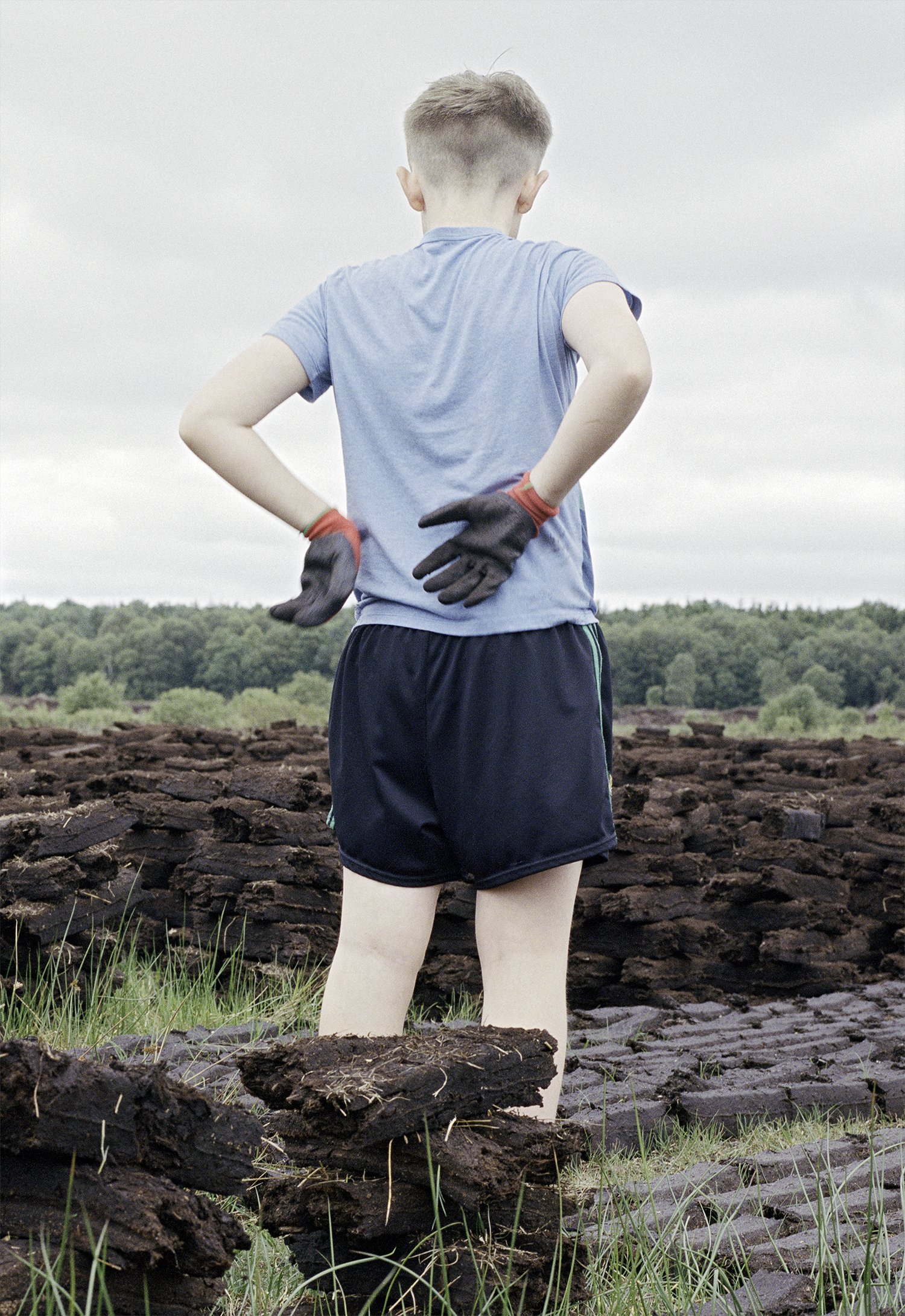
Josh footing turf in Carbury, Co. Kildare, Ireland, 2020.
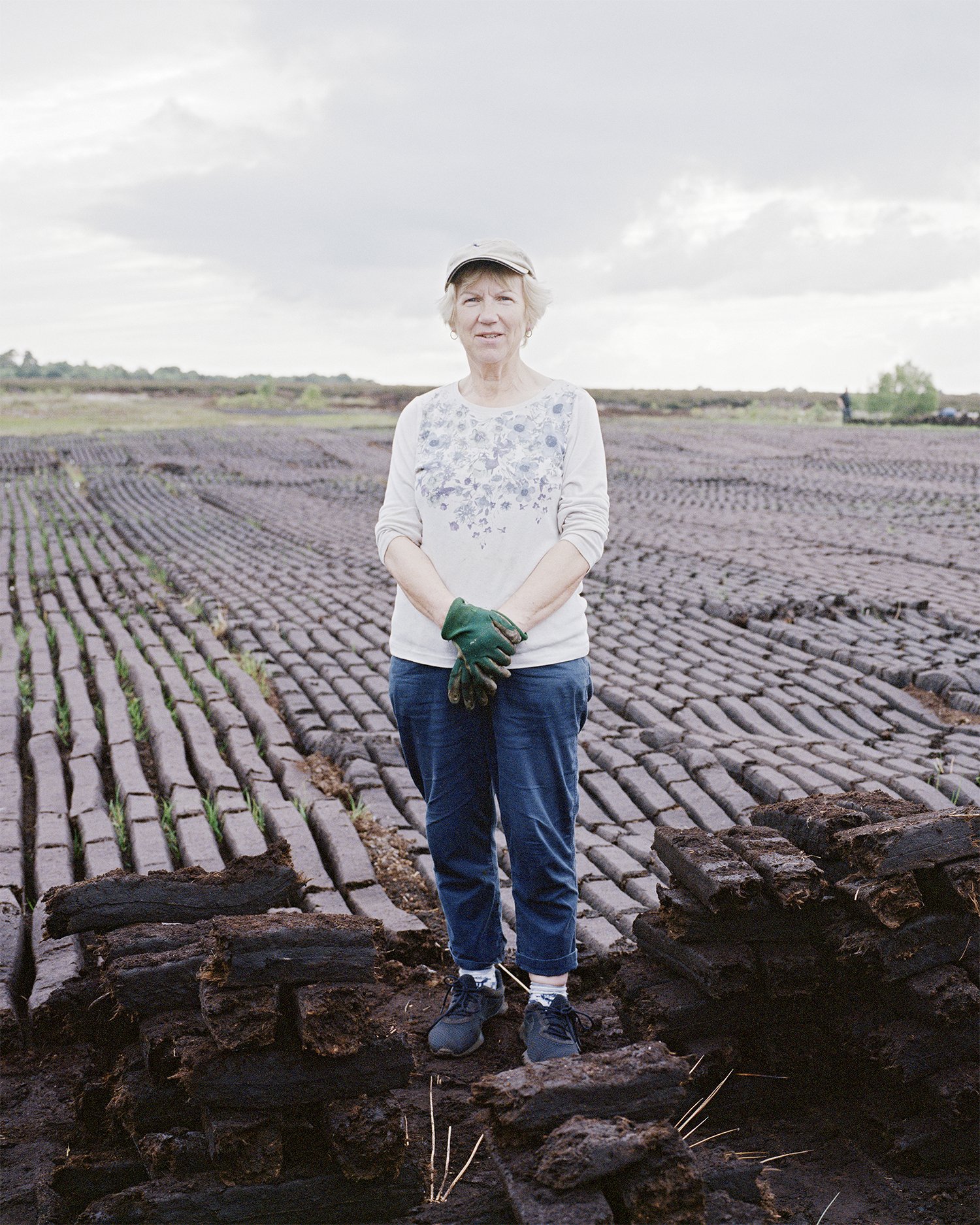
Breda footing turf. Shot in Summer on a community owned bog, Carbury, Co. Kildare, Ireland, 2022.

3 generations of the Hynan family bringing home the turf. Shot in Summer on a community owned bog, Carbury, Co. Kildare, Ireland, circa 1969. (Courtesy of Ann Kavanagh).

3 generations of the Hynan family bringing home the turf. Shot in Summer on a community owned bog, Carbury, Co. Kildare, Ireland, 2022.
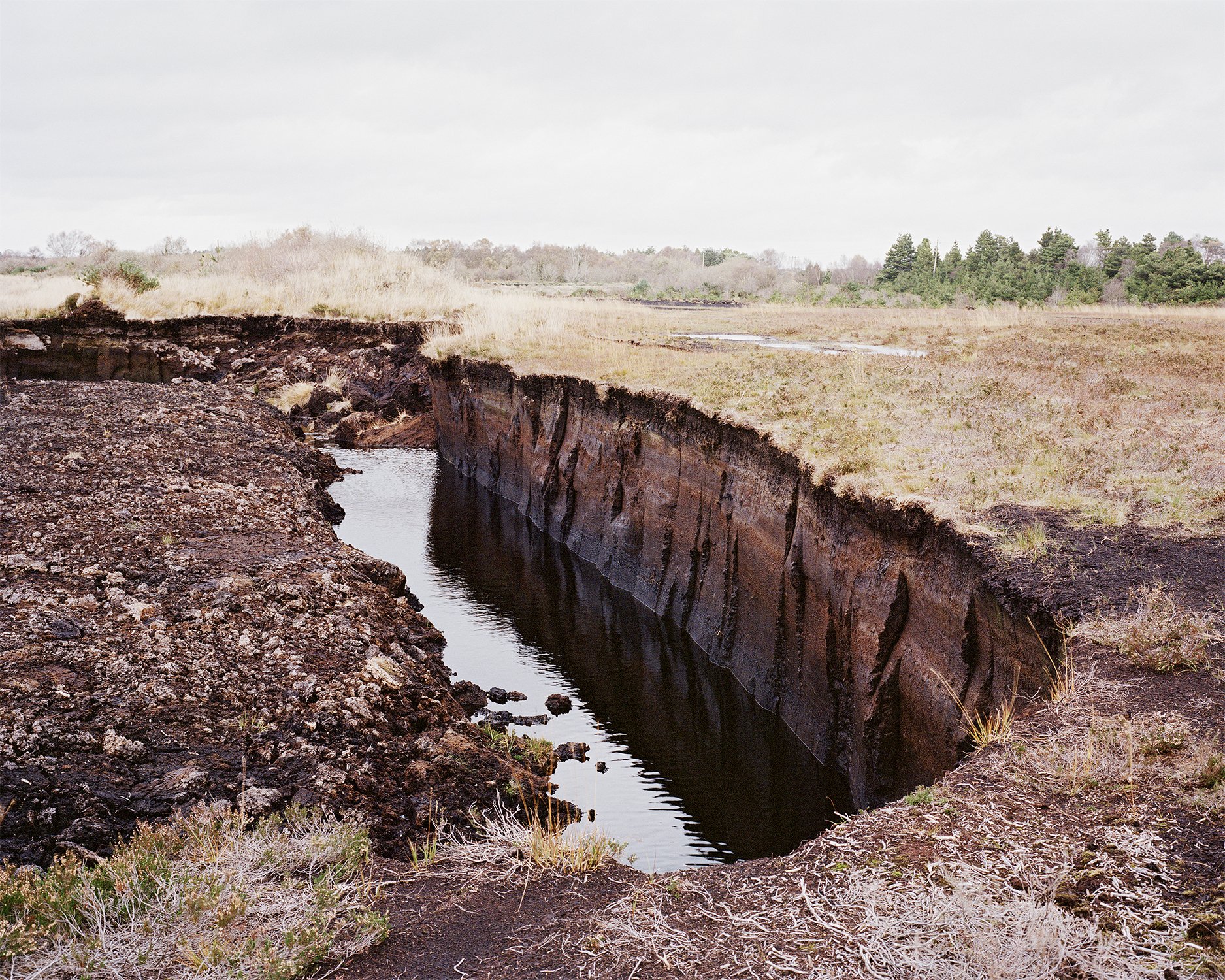
Facebank used for turf cutting. Shot in Winter on a privately owned bog, Co. Offaly, Ireland, 2022.
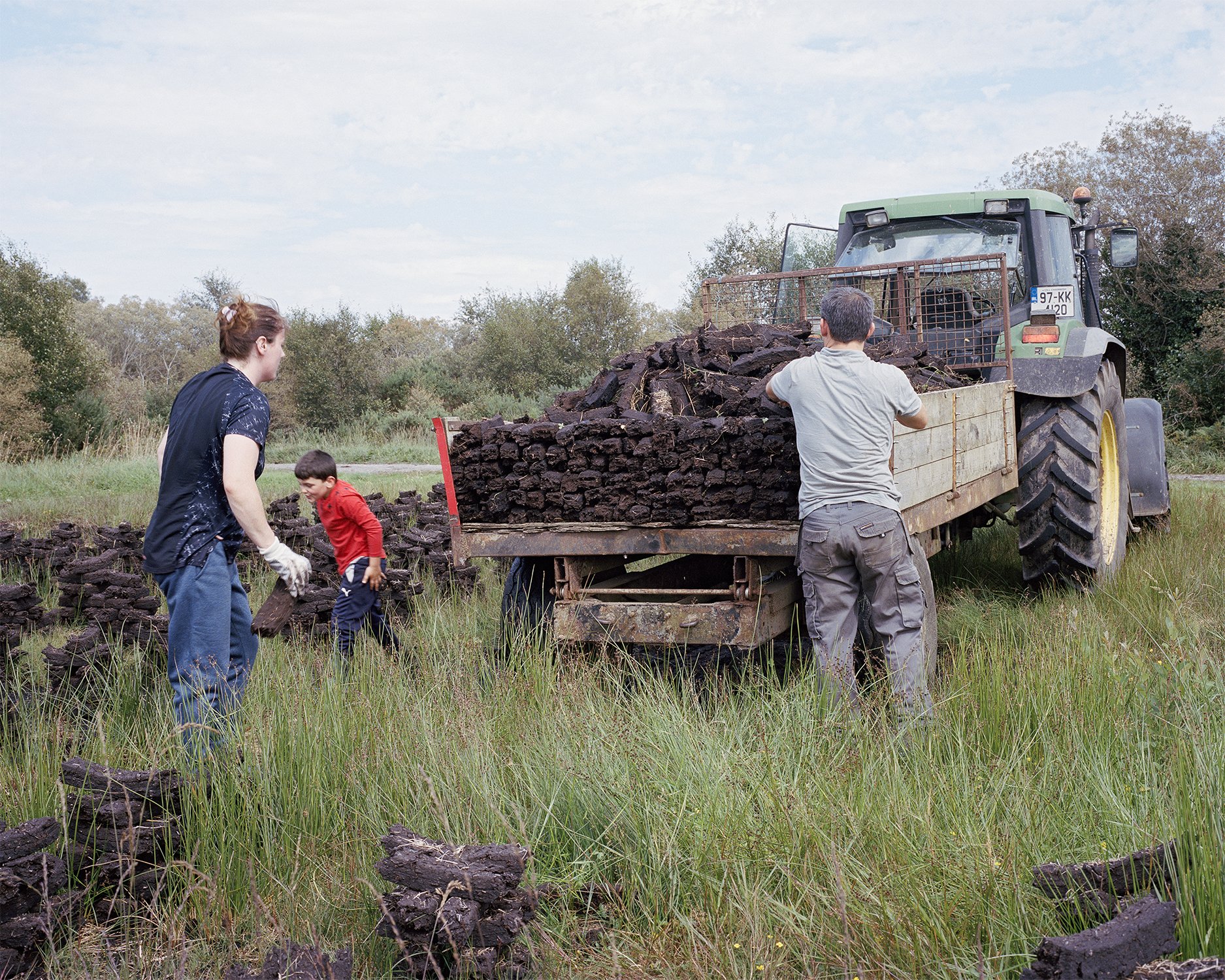
Locals bringing home the turf. Shot in Summer on a community owned bog, Carbury, Co. Kildare, Ireland, 2019.
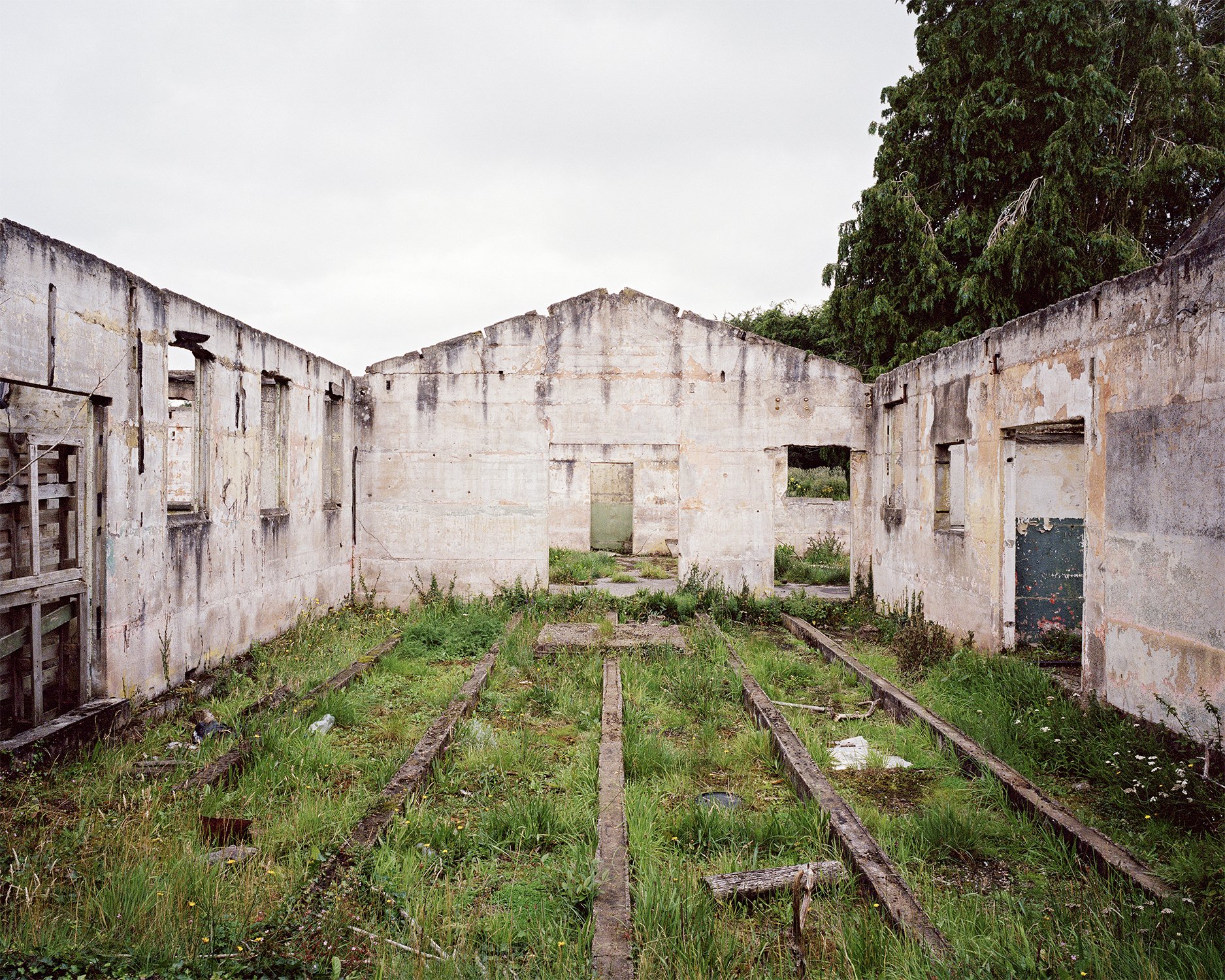
Canteen in Turf Camp built during World War 2 to counteract fuel shortages. Shot in Summer, now privately owned. Killinthomas, Co. Kildare, Ireland, 2020.
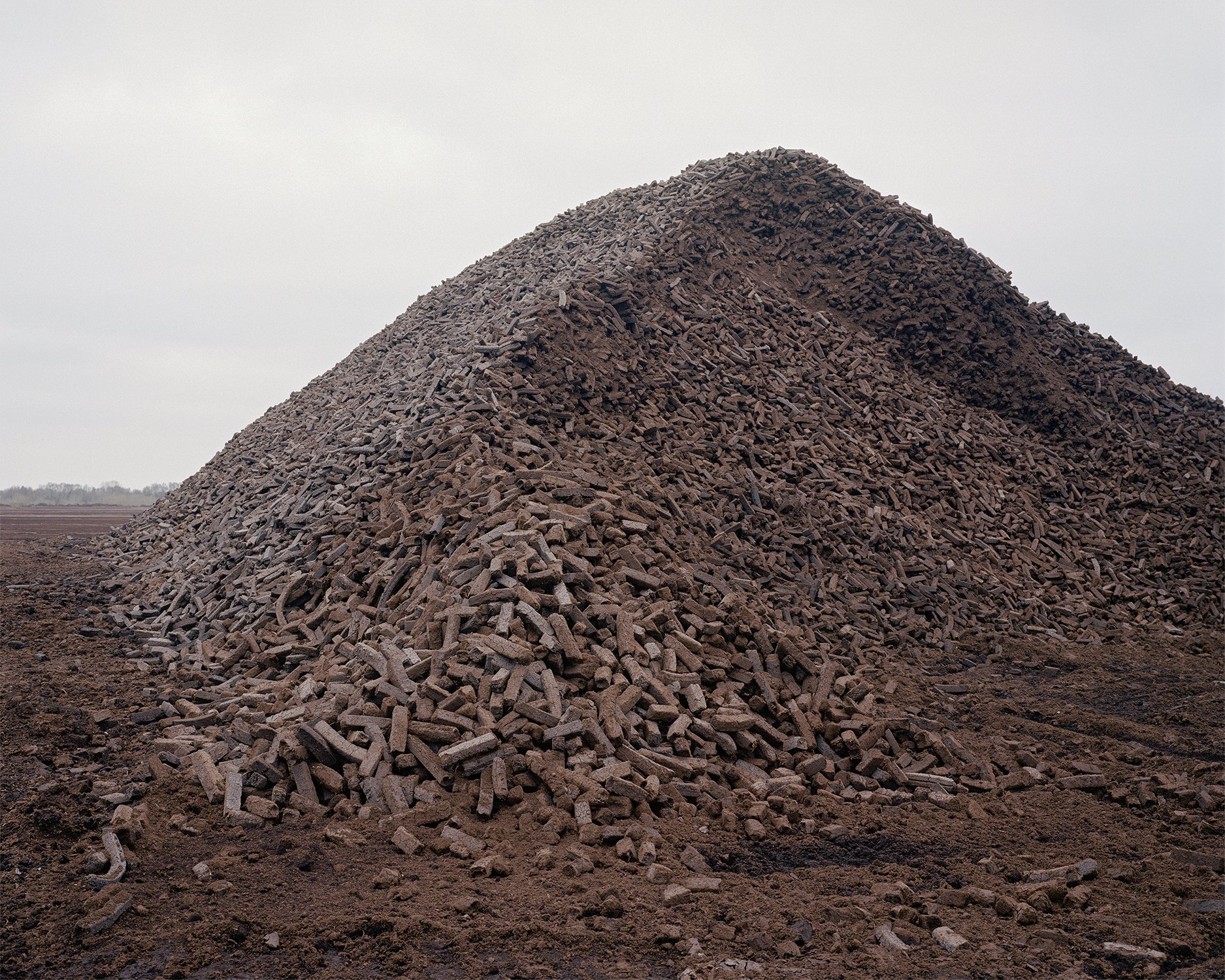
Large mound of mechanically harvested turf for horticultural use. Shot in Spring at a privately owned horticulture production facility. Co. Offaly, Ireland, 2020.
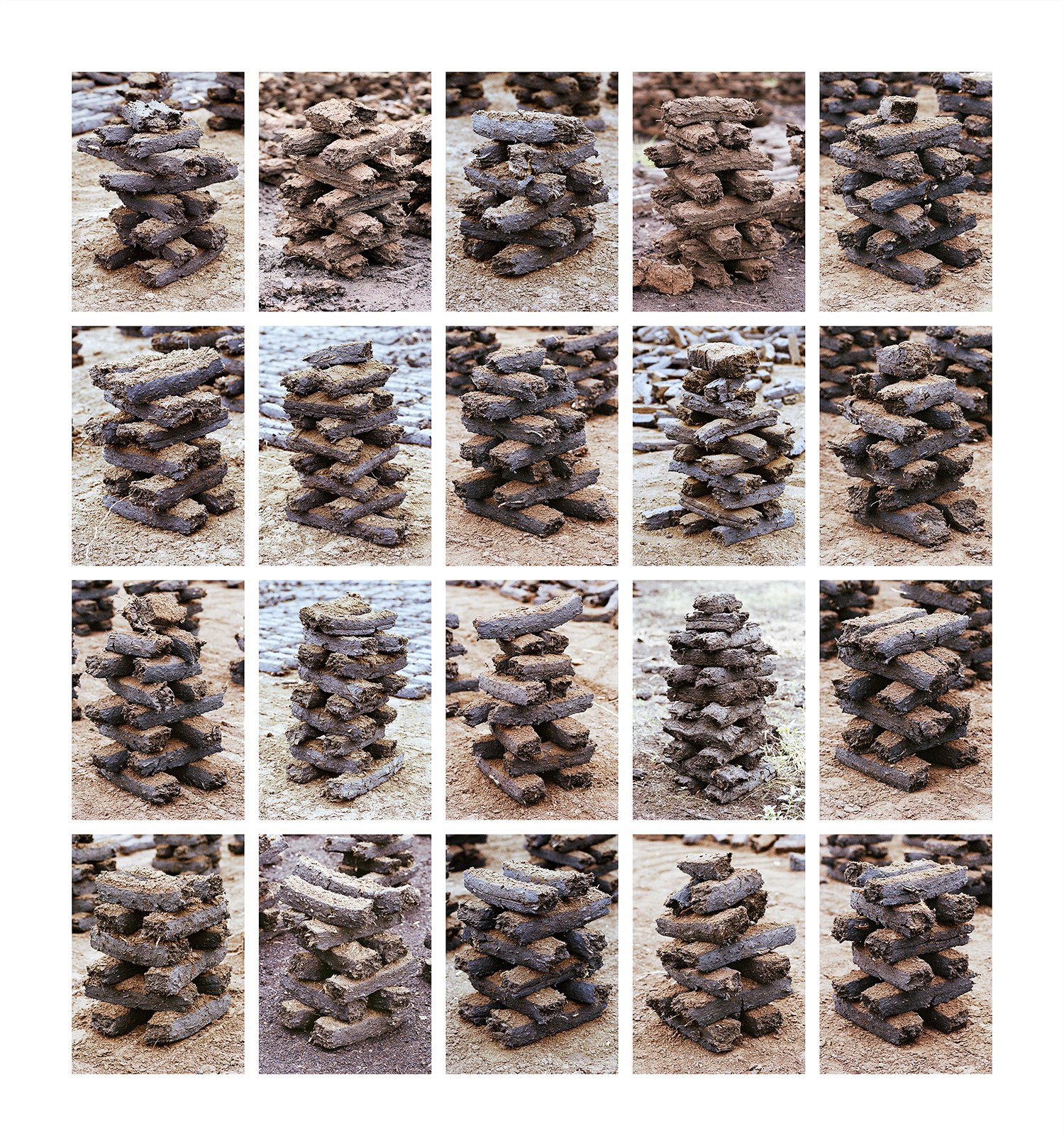
20 Box Footings. Shot in Summer on local community and privately owned bogs, Carbury and Ticknevin, Co. Kildare, Ireland, 2021.

20 Turf Footers. Shot in Summer on local community and privately owned bogs, Carbury and Ticknevin, Co. Kildare, Ireland, 2018-2021.
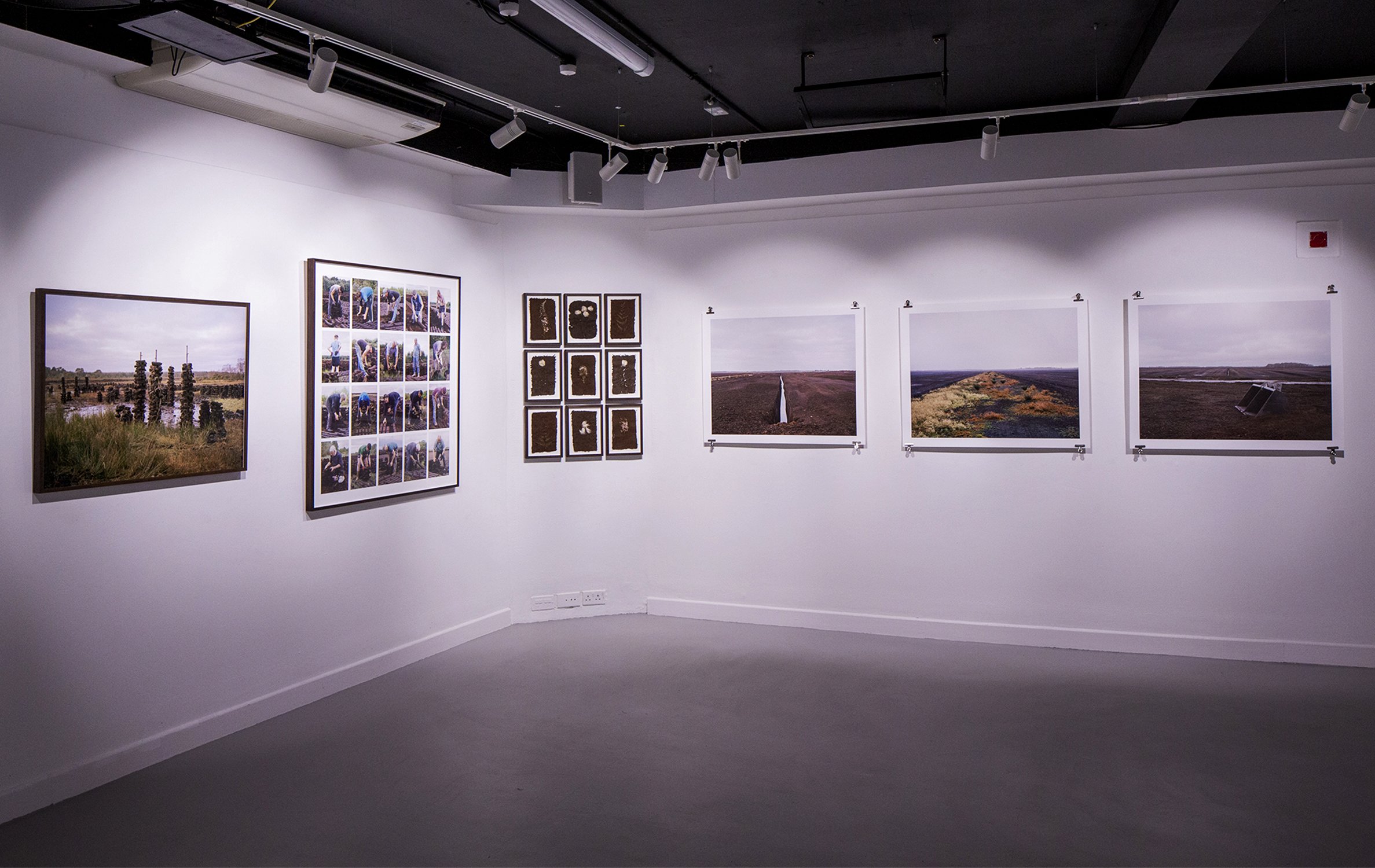
Installation shot from ‘Beneath | Beofhód’ solo exhibition, Riverbank Arts Centre, Newbridge, 2021.
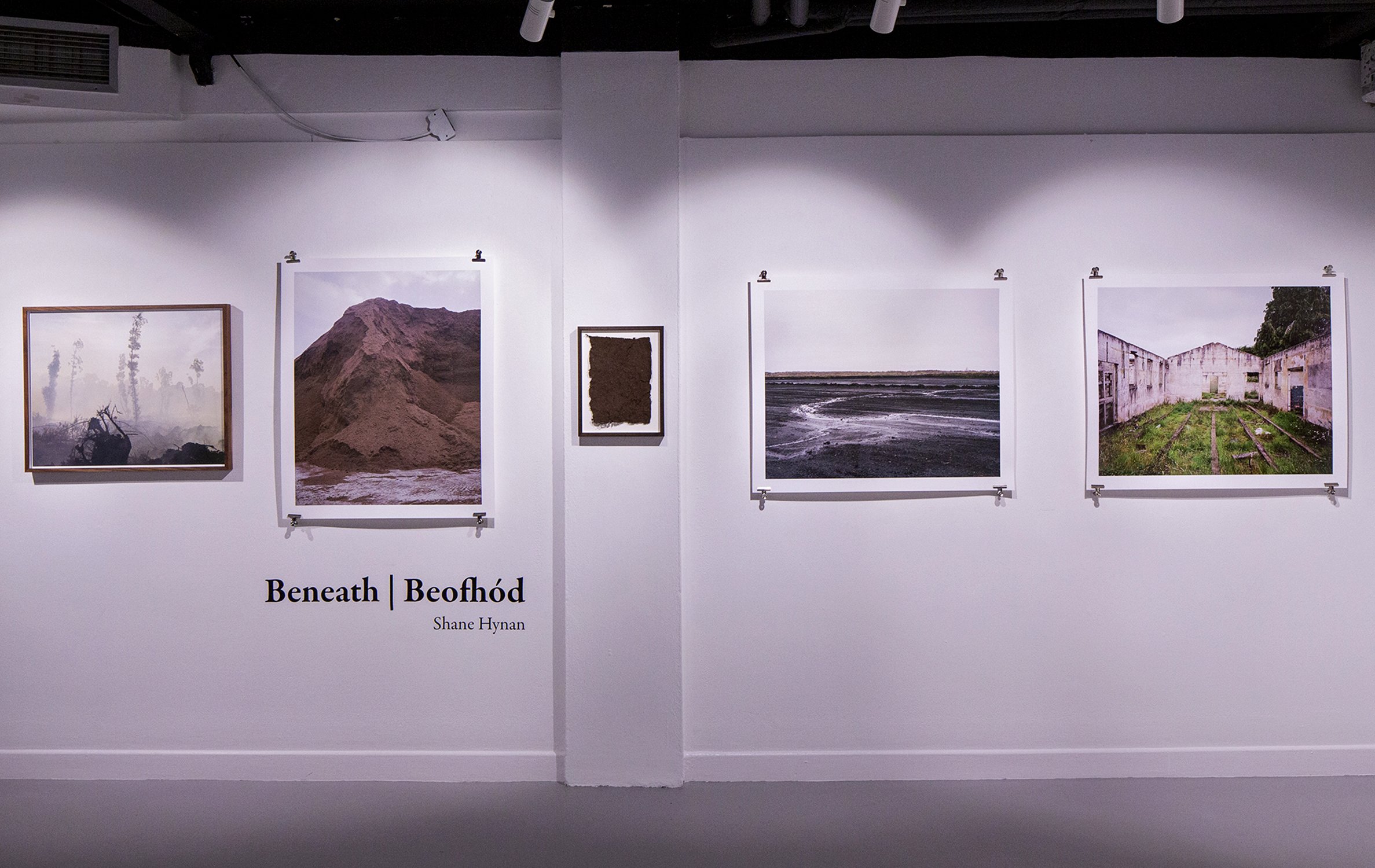
Installation shot from ‘Beneath | Beofhód’ solo exhibition, Riverbank Arts Centre, Newbridge, 2021.
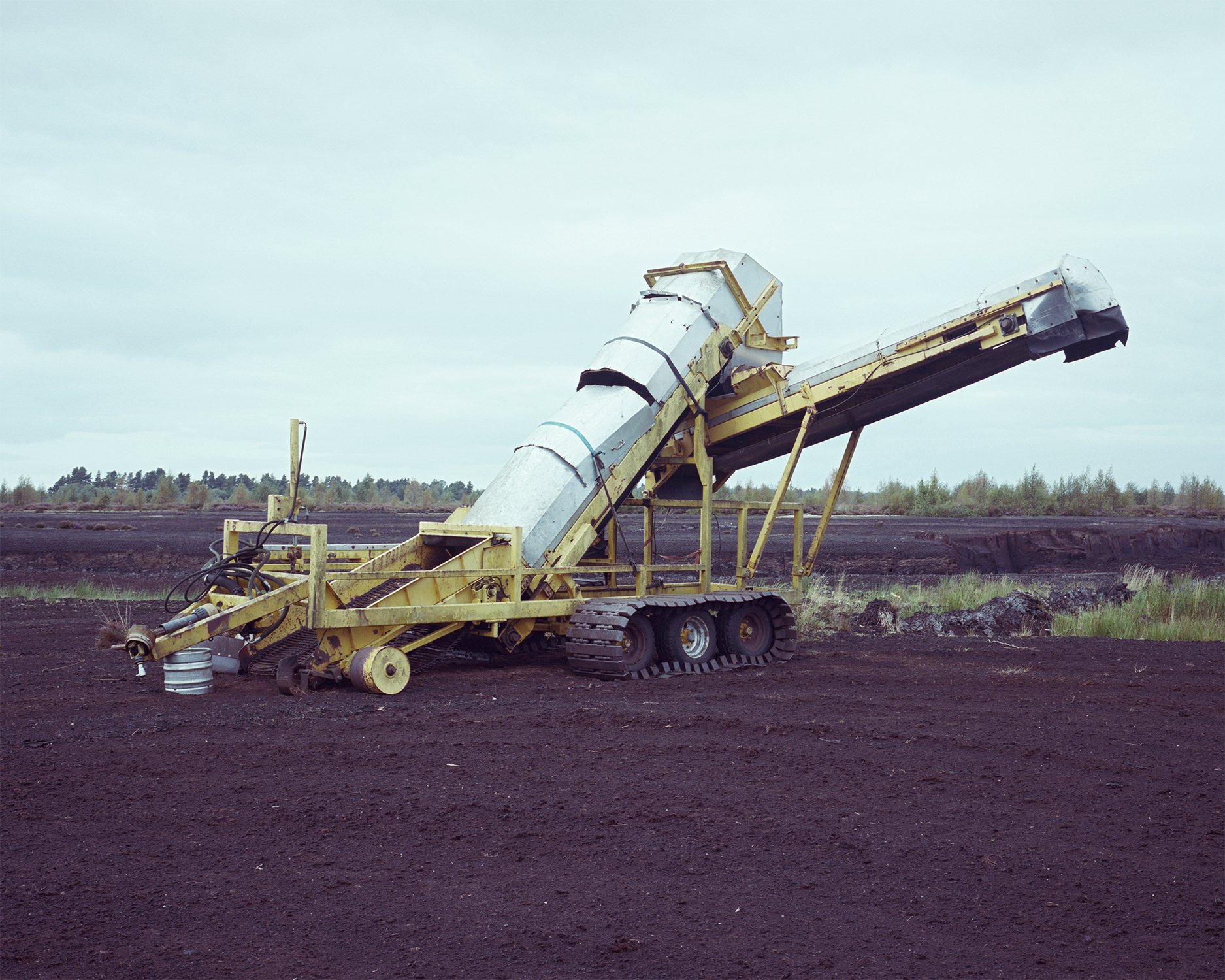
Turf Collector machine, County Kildare, Ireland, 2024.
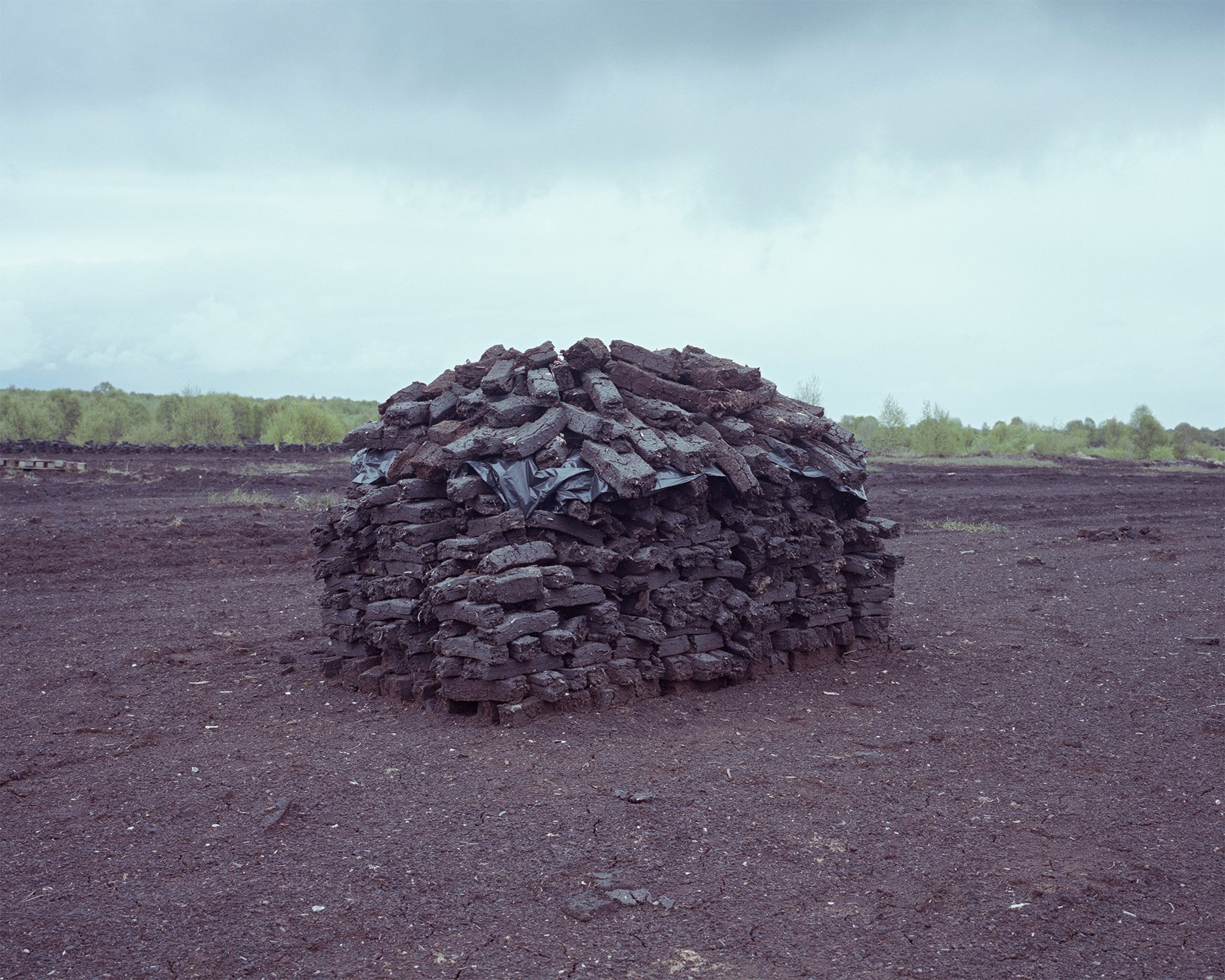
Clamp of turf harvested for domestic use, Ticknevin, County Kildare, Ireland, 2024.
Beneath | Beofhód (2018-present)
‘Beneath | Beofhód’ explores the culture and landscape of bogs in the Irish midlands and reflects on the endangered bog habitats of the artist’s immediate post-industrial landscape. It contemplates the transition in perceptions and use of peatlands and the subsequent social, environmental, economic and cultural impact on the midland’s region.
Beofhód, an Irish word meaning ‘life beneath the sod’, evokes the primal, totemic place of bogs in Celtic culture. The project contemplates social and environmental justice alongside a topographical mapping of peatlands, and a metaphorical exploration of the pre-Christian reverence for elemental energies in the landscape. For Joseph Beuys, bogs were at once “the liveliest elements in the European landscape” and “storing places of life, mystery and preservers of ancient history”.
Drawing on Hynan’s authentic connection with his local community and landscape, the work traces the remnants of industrial peat harvesting which brought economic benefits and formed a strong sense of cultural identity in the region. However, urgent ecological imperatives have created tensions between the remaining small-scale harvesting of the bog for turf and the need to protect and enhance peatland habitat and biodiversity.
The work explores the de-industrialisation of the bog; where large-scale peat extraction has ceased, alongside smaller scale turf cutting by communities; still harvesting turf for domestic use. More recent explorations include resurgent landscapes where bogs are actively being restored by communities and Bord na Móna as well as the construction of new wind and solar farms on peatlands.
The intention of the work is to show an ancient connection with the landscape, enabling today’s bogland to be re-imagined as both an engagement with the past, and a potent site for climate action in the present.
The geographical extent of the project includes the eight midland counties designated as the most affected by Ireland’s transition to a low carbon economy in the national ‘Just Transition Fund’ set up in 2020 including East Galway, Kildare, Laois, Longford, North Tipperary, Offaly, Roscommon and Westmeath.
Beneath | Beofhód is kindly supported by the Arts Council of Ireland, Kildare Arts Service and Roscommon Arts Centre.
Audio-visual piece shows intervention by artist in his local bog using turf harvested to build instinctive structures.
Audio-visual piece incorporating image slideshow, video footage and ambient sound.
“This project stood out for Hynan’s impeccable execution, evoking a tenacious stillness in the images that effortlessly carries the weight of the work’s environmental theme. The photographs possess a monuentality that suggest a point of no return; a moment of reckoning between the past and the future, and discovery and loss. Carefully balancing the some-times-contradictory requirements of these peat lands, Hynan’s images are at once expansive and immediate, reminding of the urgency of environmental degradation and the human impact of these responsibilities.” Catherine Troiano Curator, National Photography Collections at National Trust UK in Source Graduate Photography Online 2019
“With so much of the visual language around climate change focused on aircraft in flight, snaking traffic jams, or huge factories billowing fumes into the sky, it’s interesting to see a perspective so personal and human – real people working with their hands, as generations before them have done. Shane’s work acts as both a fascinating cultural insight, and addition to the climate discussion.” Editor’s comments from The Face of the Earth Life Framer Issue 64